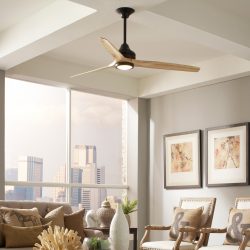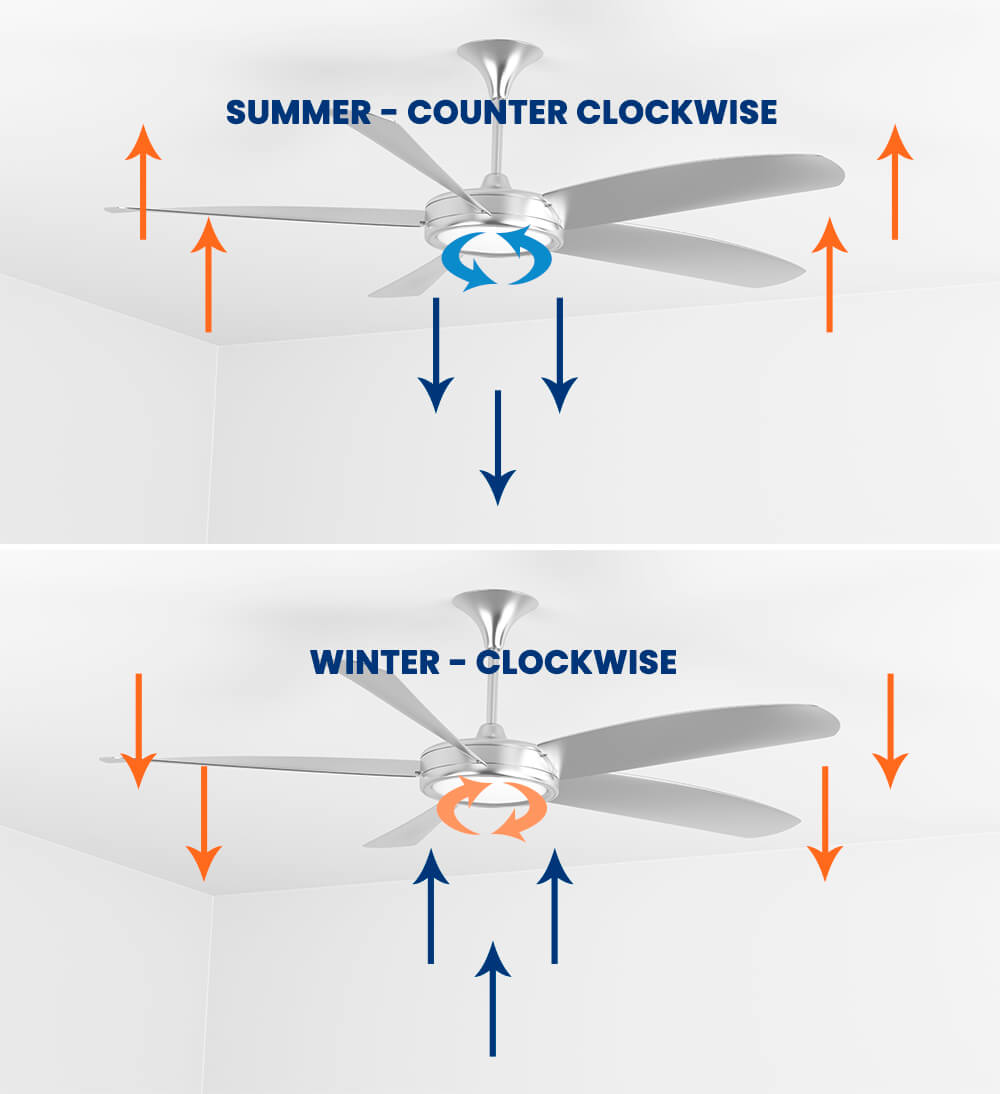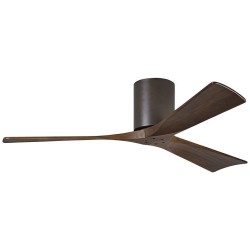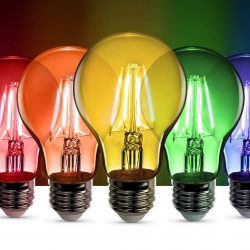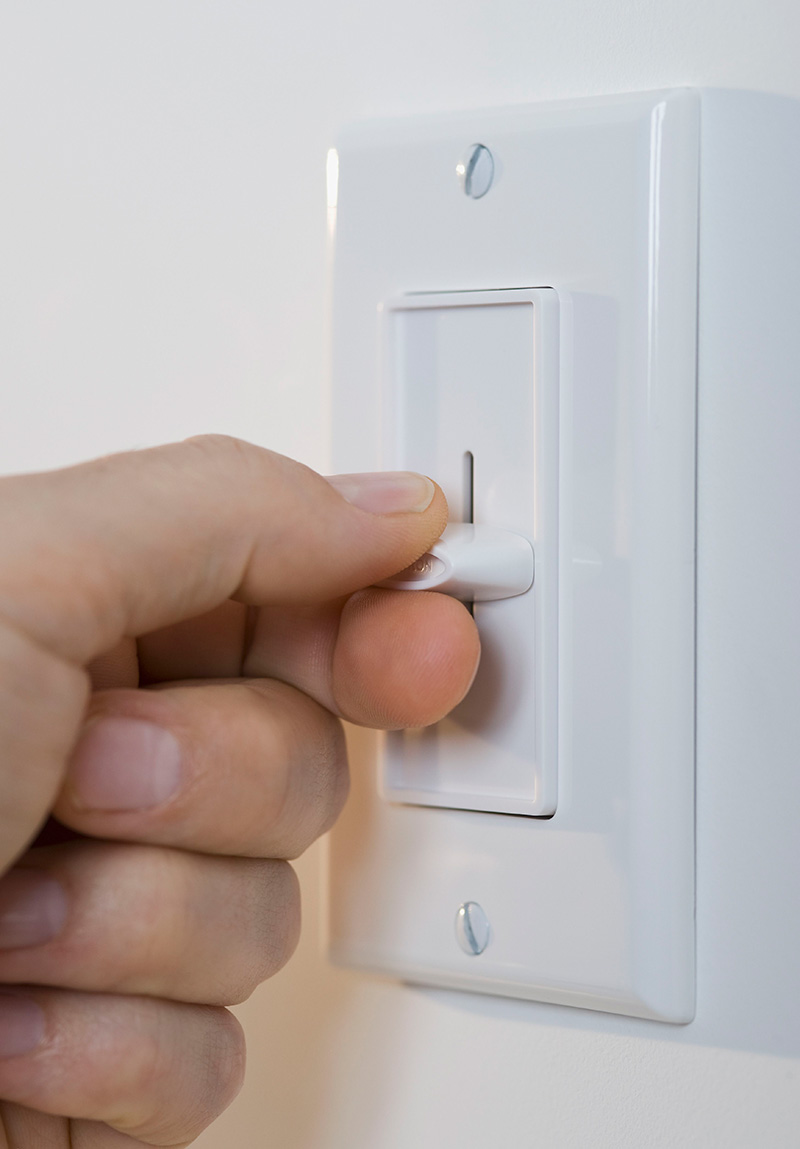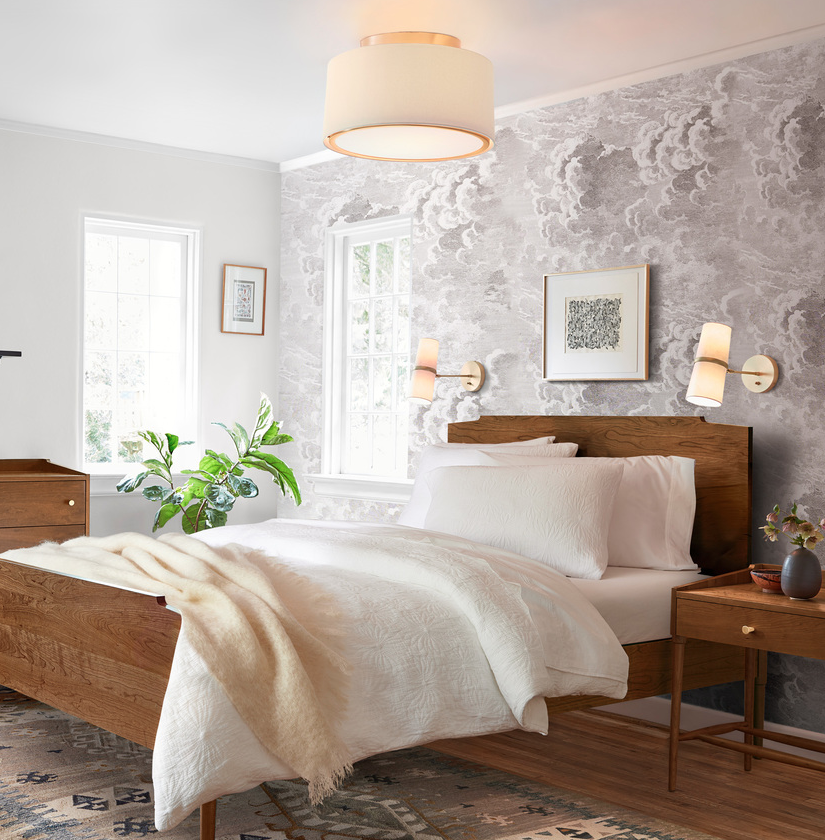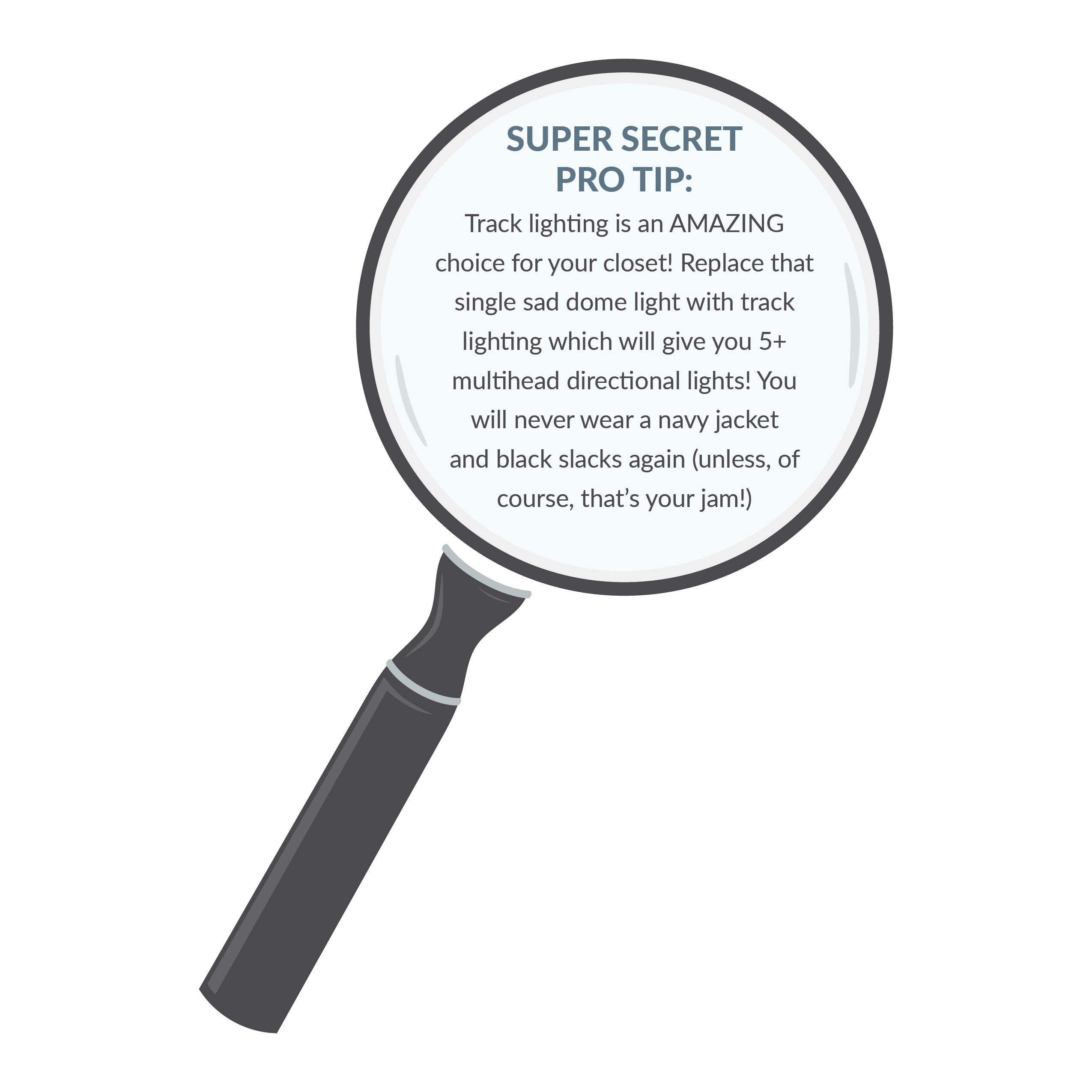Tag: Lighting
The Ultimate Ceiling Fan Guide
Friday, October 8, 2021 at 1:00pm

Ceiling fans are ‘fan’tastic for air ‘fan’atics! Aside from the fact that fans give you 360 degrees of air 365 days of the year, many adoring ‘fans’ flock to them for energy conservation, style, and ‘fan’cy function. Ok, no more fan puns, we promise. 😉
Read on to learn how to find a fan that’s the perfect fit.
Style and Shape
There are several factors to consider when choosing the perfect fan for indoor or outdoor use. Pitch, speed, and ratings are essential details that we’ll cover later, but first, let’s get to the fun stuff! The style of your ceiling fan can set the mood for the space and circulate air to keep you cool or (surprise!) warm.
Here’s the rundown…
Modern:
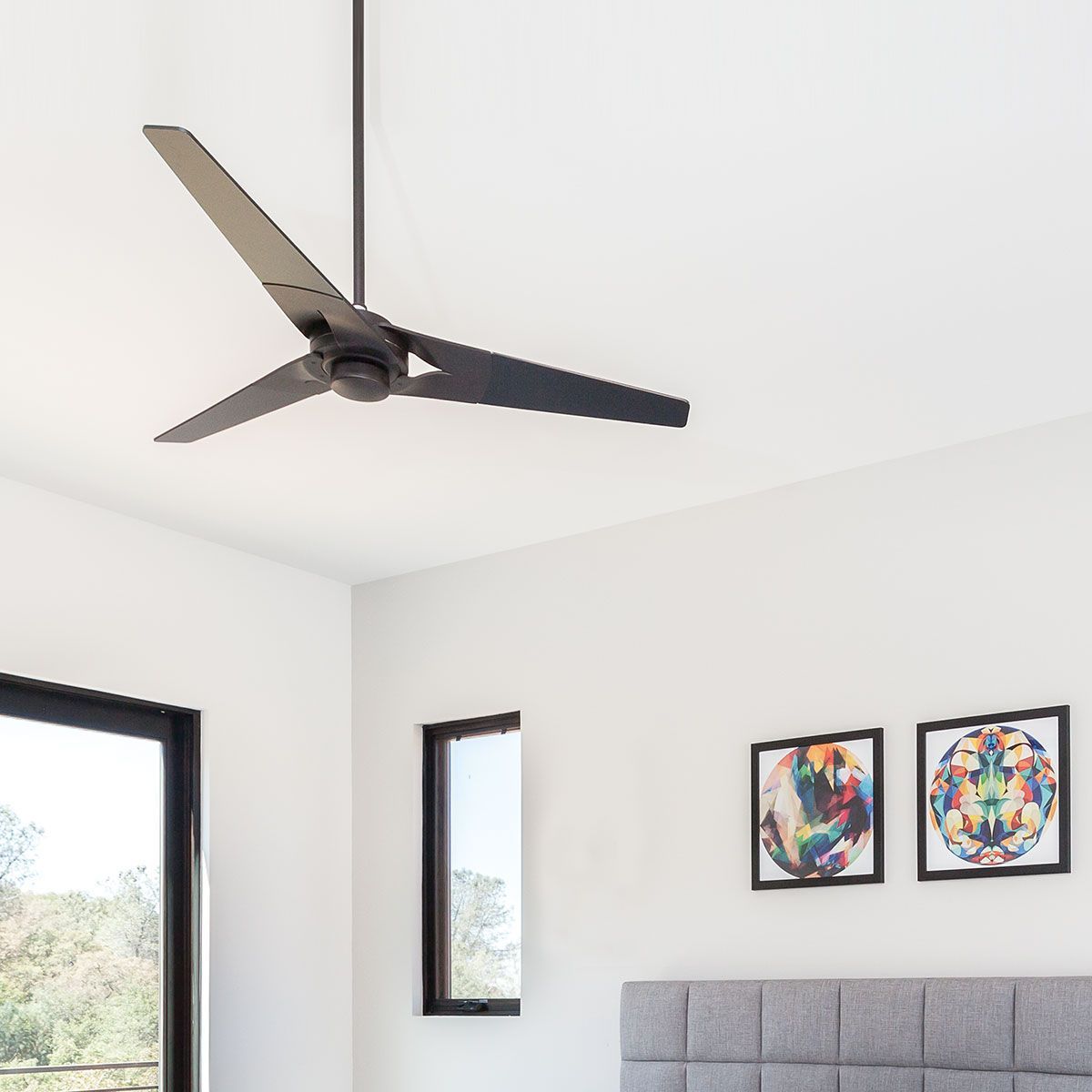
Features one to three blades or multiple blades facing different directions. A common modern style is the propeller fan. As you probably suspected, it looks like the propellers of a plane with long, rounded blades. A more rectangular version of the propeller is an aviator blade fan.
Rustic/Farmhouse:

Weathered finish, wood or iron, homey shapes. A common trend is the windmill fan. With numerous blades made of wood or metal for a glorious windmill look, this type of fan gives increased airflow with its higher pitch.
Industrial:
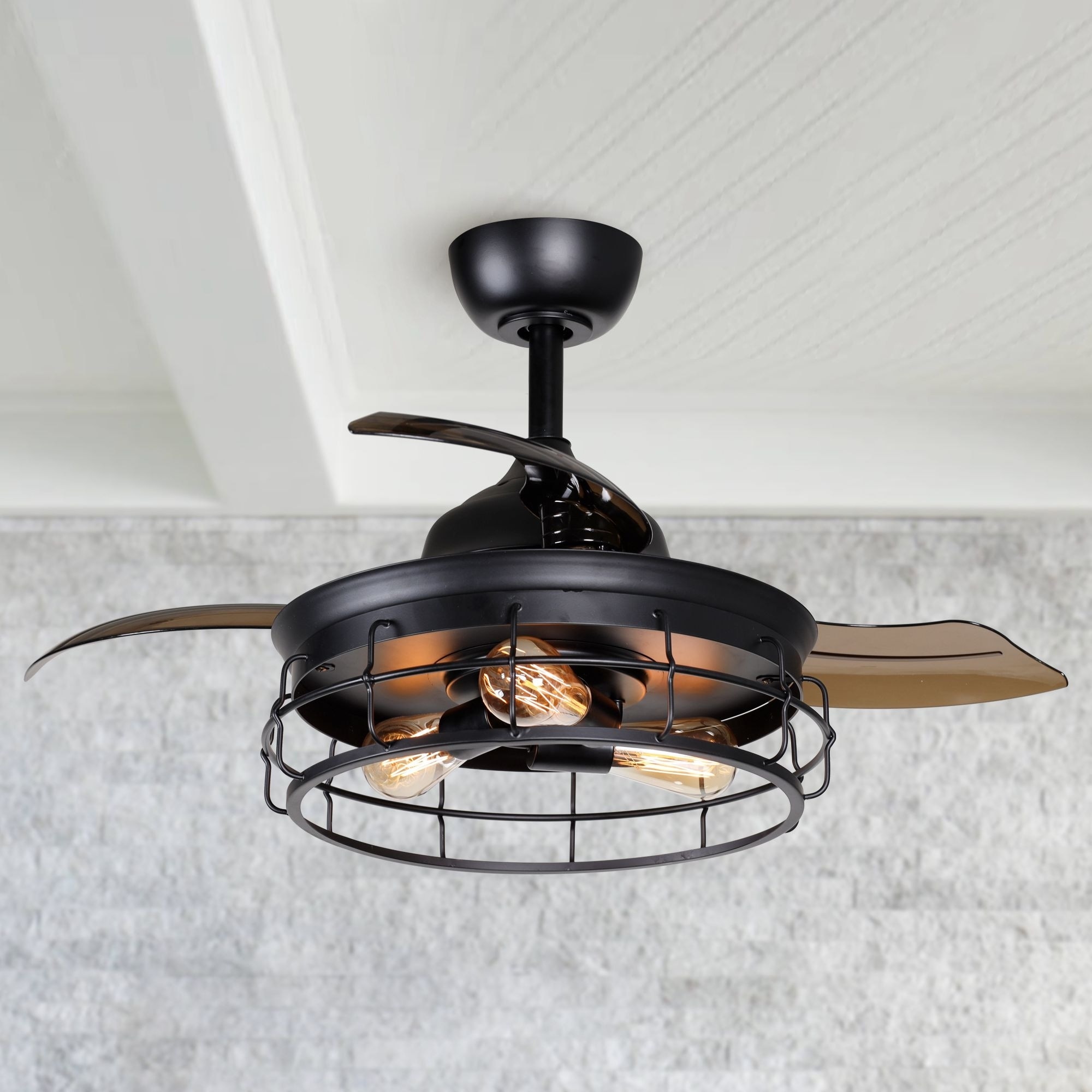
Rugged and minimalist. A cage fan protects the fan’s blades and body in – you guessed it – a stylish cage. You even adorn a larger space with three or more cage fan fixtures. If you want to up the ante, a larger turbine blade fan comes in a metallic finish with a steep pitch and many blades, like a souped-up windmill fan.
How to Measure for Your Fan

The two dimensions used for ceiling fans are height and diameter, and your selection will vary based on your room’s shape and size. If you have a lower ceiling, it’s easy to change the fan’s height to fit. On the flip side, you won’t be able to change the diameter.
DIAMETER + SQFT = PERFECT MATCH
First, you’ll want to find your room’s size in square feet (the room’s length multiplied by the room’s width.) Next, pick your fan’s diameter to fit within the square footage. Also called fan sweep or span diameter, the inches mentioned in the fan’s description are the diameter (i.e., 52″).
According to ENERGY STAR, these are the recommended diameter measurements by room size:
- Up to 75 square feet = 29 – 36 inches
- 76 – 144 square feet = 36 – 42 inches
- 144 – 225 square feet = 44 inches
- 225 – 400 square feet = 50 – 54 inches
PRO TIP: If you have a room of more than 400 sq ft, you’ll need at least two ceiling fans for prime circulation. Also, install your fan in the center of the room to ensure the best airflow.
Ceiling Height
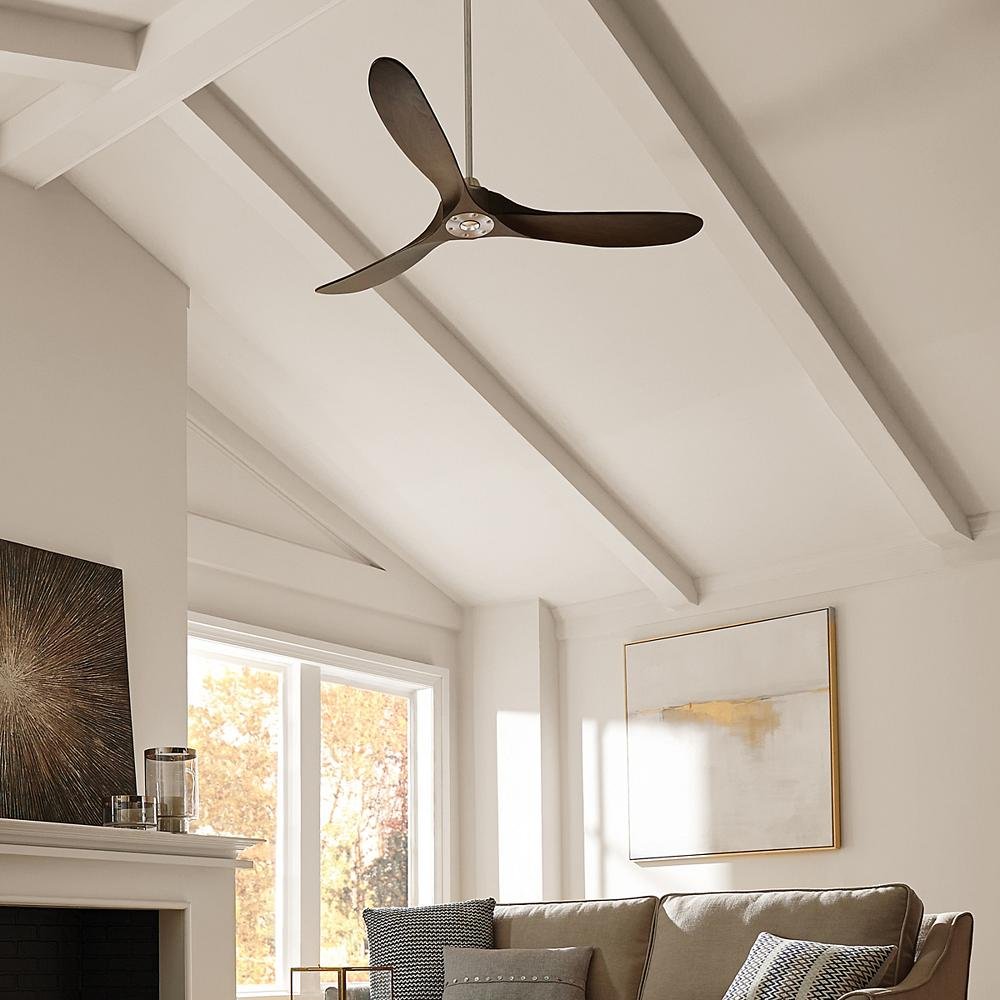
When making your fan selection, it’s essential to keep your ceiling height in mind to determine the correct mounting option.
Flush-Mount:
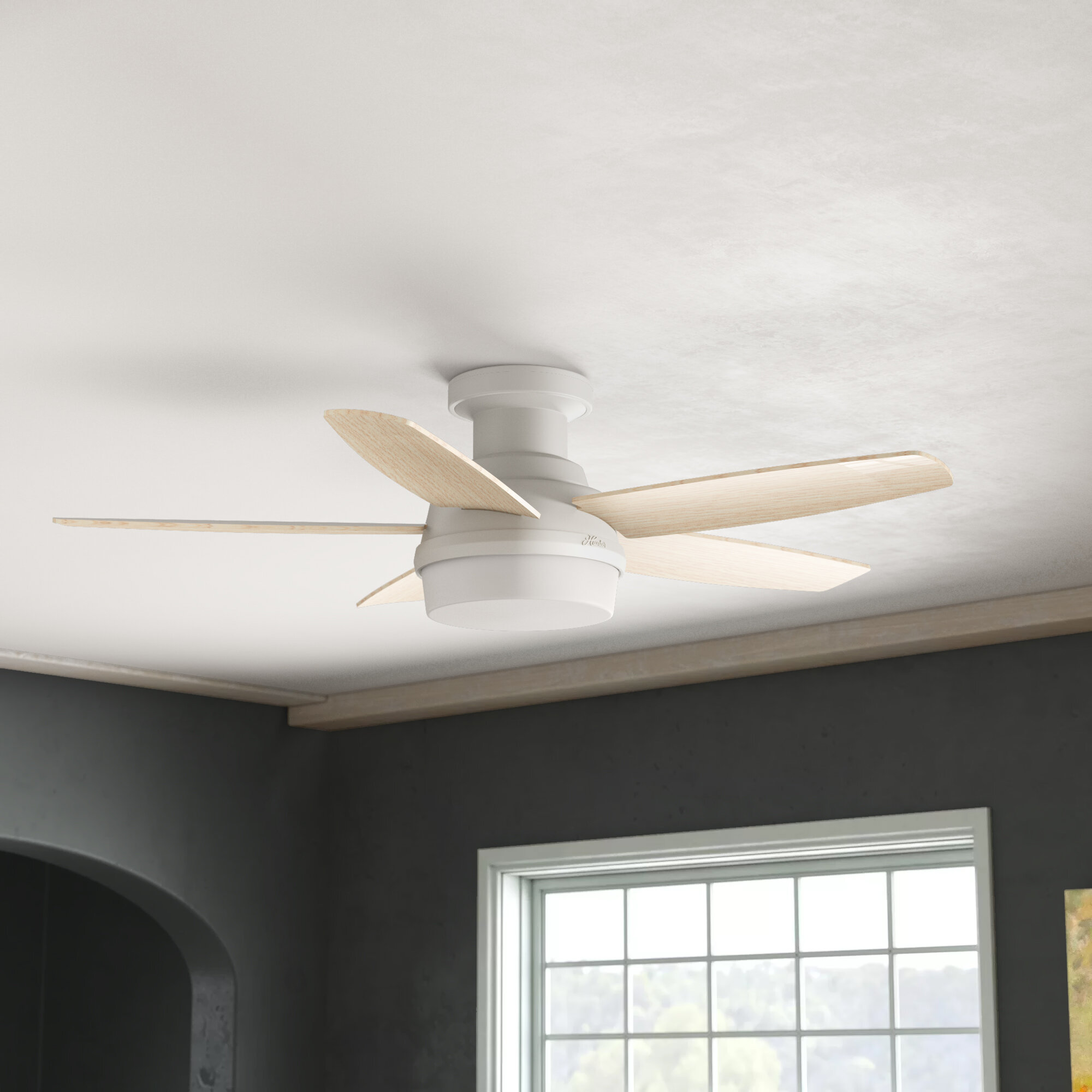
The ceiling fan is mounted flush to the ceiling without any additional attachment. This option is ideal for rooms with low ceilings or if you prefer a low-profile look.
Downrod Mount:
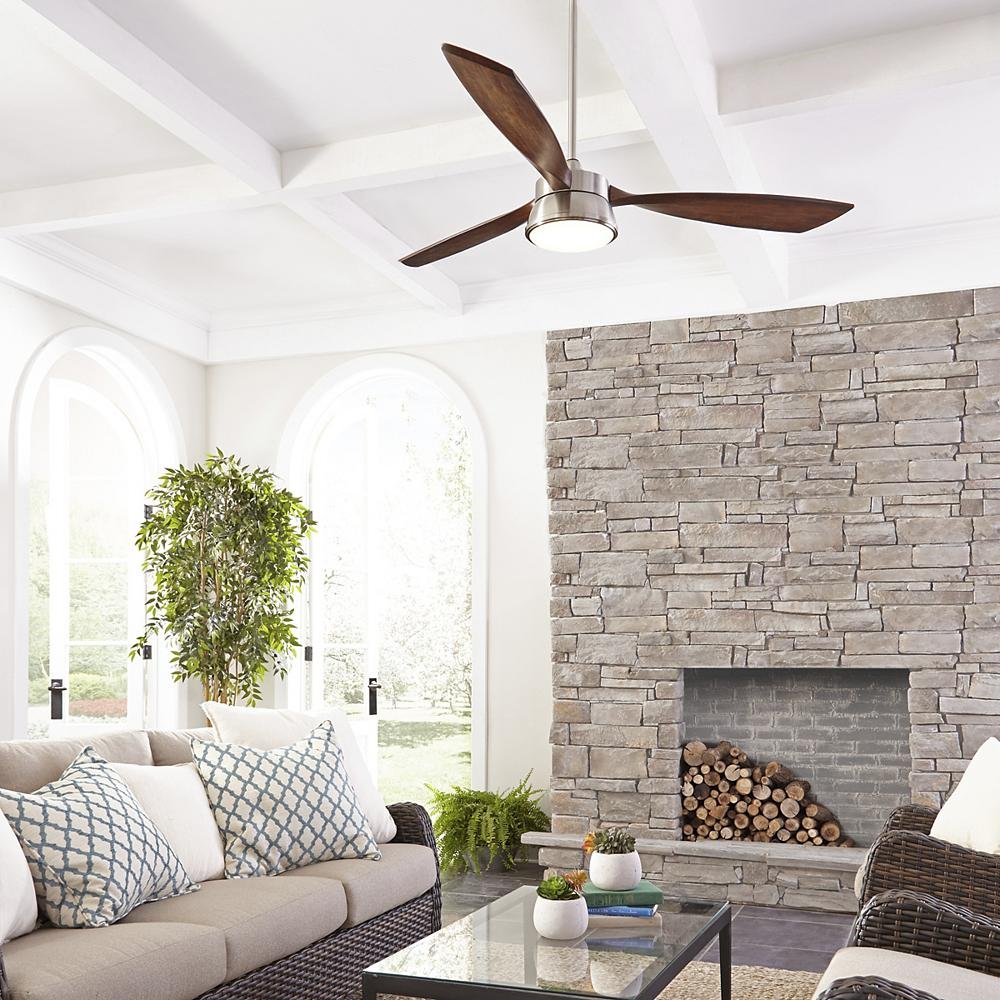
Best for rooms with high ceilings, many ceiling fans will include a downrod (a pole that attaches to the fan from the ceiling and adjusts its height.) For very high ceilings, you may need to purchase a longer downrod. See below to determine the ideal downrod length.
Rod Recs
If you’re rockin’ a 9’ft ceiling, grab yourself a 6″ downrod. For a 10-footer, double your rod to 12″. Going up, 12′ needs 24″ and 14 feet needs 36″. Higher still, 16′ ceilings need 48″, 18′ take 60″, and a whopping 20′ will require 72″ of downrod.
Safety First!
To protect taller folks, hang your fan between 8-9′ from the floor and never lower than 7′. Let’s keep the home head-bump free, shall we? If you have a lower ceiling, go with a flush mount.
PRO TIP: If you’ve got sloped or vaulted ceilings, pair your fans accordingly with those marked “sloped ceiling compatible.” If it’s not, sloped-ceiling mounting kits are available.
Blade Power
A few aspects of the ceiling fan’s blades (like pitch, motor, and the number of blades) will directly affect how the air circulates.
Blade Pitch
The angle at which the blades are tilted is called the pitch. The blade pitch indicates how much airflow will be created by specific fan types. If you have a steeper pitch, you’ll get a higher airflow. The most efficient airflow is created by a pitch of 12 degrees or higher. If you’re after a more steady ride, go for a more level blade pitch. You’ll be lulled to sleep with a gentle breeze in no time. Plus, those work-from-home meetings won’t be distracted by the sound of the fan spinning.
And hey, if you’re after a purely decorative option, seek pitches under 10 degrees. Look no further than the leaf blade fan for a dramatic impact with a lower pitch and subtle airflow. Five wide flat blades look like leaves and fit seamlessly with the coastal design styles.
For a higher efficiency fan, choose a twisted blade fan. Its steep pitch and higher airflow pair nicely with the twisted blades.
How Many Blades Are Too Many?
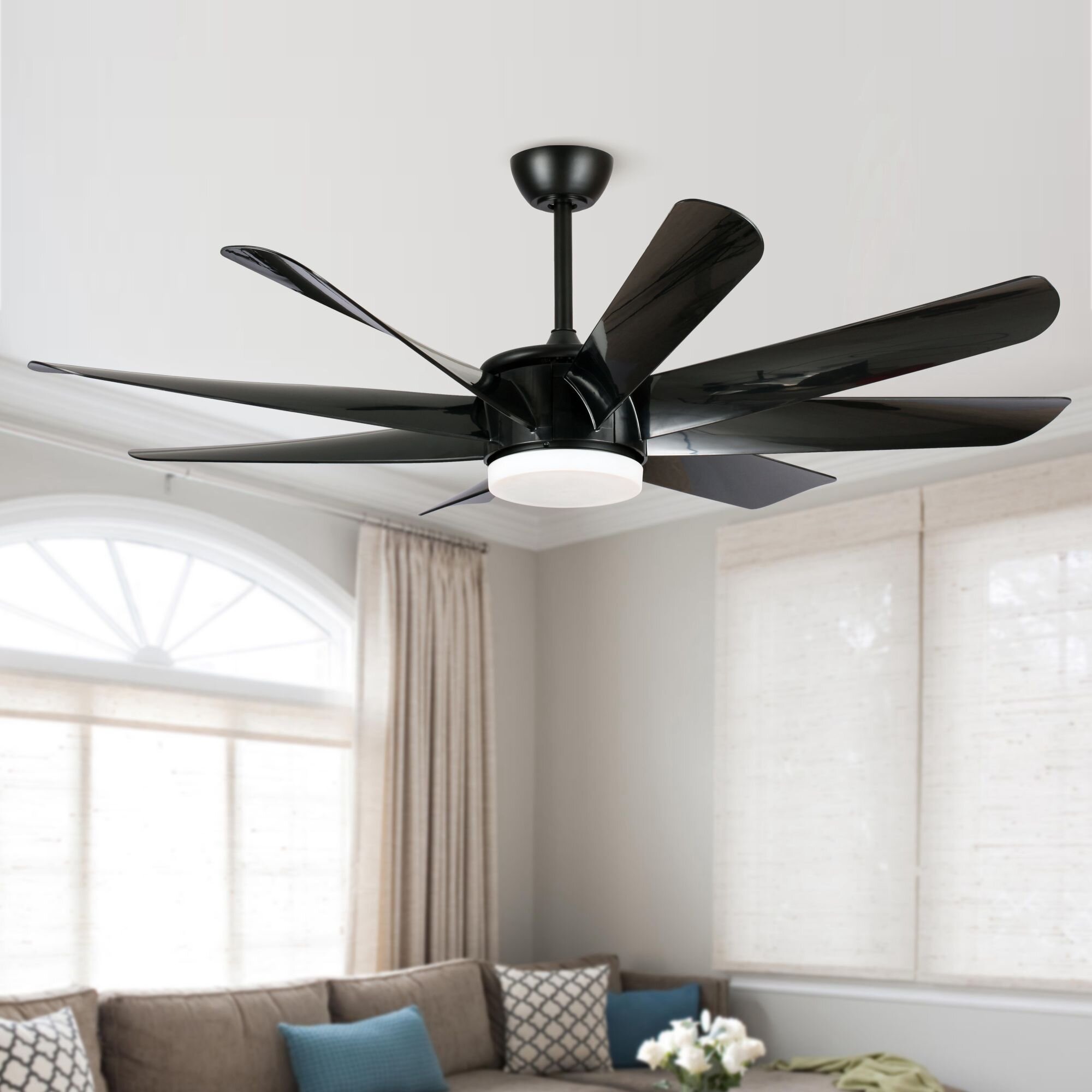
Does a ceiling fan really need to have more than three blades? More blades obviously create more air to keep you cooler, right? Nope. There are quite a few factors that go into how air circulates – like the pitch, shape, and weight of the blades- not to mention the type of motor. You might have a fancy windmill fan with a dozen blades, but it won’t produce any more air than a traditional three-blade if the stars aren’t aligned just right. Why? It’s all up to a little thingy called airflow rating…
Airflow and Efficiency
AirFlow Rating FAQs
Q: What is an AirFlow Rating (US)?
A: The amount of air moved by the fan per cubic feet per minute (CPM)
Q: How is it calculated?
A: When a fan moves at its latest speed. Higher numbers = more air.
Q: When should I purchase a higher airflow fan?
A: For outdoor use on a patio or porch where noise isn’t an issue.
Q: Are there any other specs to mention?
A: Yep, keep an eye out for the cubic feet per minute per watt (CFM/W)
Q: Great, so what’s the ideal number?
A: 75 or higher!
Q: What does it mean?
A: A higher number means more efficiency.
Speaking of efficiency…
Efficiency Rating
There’s a special rating given to ceiling fans that have been rigorously tested and have the highest energy efficiency ratings. Fans with Energy Star ratings are perfect for us environmentally-conscious folks. There’s even a big payoff – they’re 60% more efficient than other fans and can subsequently lower your monthly utility bill.
Temperature Control
You’ll LOVE the option created by a reversible motor to reverse blade directions for summer and winter. Summer blades spin forward, and winter blades spin backward. Here’s why…
Summer Fan Setting
With a Summer fan setting, the motor generates the speed for the blades to spin forward, with the leading edge being the higher blade edge. This pulls the warm air up and pushes refreshing cool air down into the room.
Winter Fan Setting
With a Winter fan setting, the blades spin in a reverse direction. As the warm air rises, it’s pushed down into the room to warm it up in the colder months. Betcha didn’t know ceiling fans could be used for warmth, too!
All About the Motor
If you’re thinking of supersizing your fan, remember that the motor’s size indicates its strength. Small, medium, or large – order up! The motor can push the blades with a greater pitch or angle when it has more strength. Motor sizes range from small (153mm) to medium (172mm) and large (188mm.)
AC/DC
Rock on! The legendary rock band was on to something when they were named after alternating current/direct current. AC is a type of motor that consumes more energy than its smaller, lighter DC counterpart. Seek a quieter DC motor for energy conservation and greater efficiency.
Ceiling Fan Features
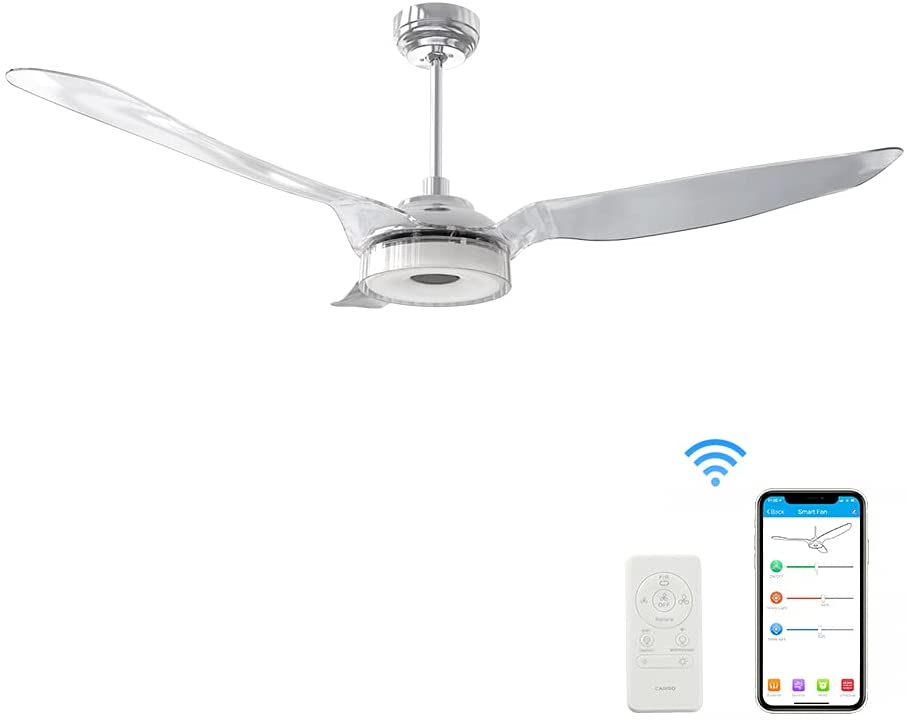
When shopping for the perfect fan, there are a few control features that might sway you towards one versus another.
Take Control
- Pull chain: Basic ceiling fans will include a pull chain that adjusts the fan speed and lighting. This option is ideal for rooms with low ceilings or spaces that aren’t often used.
- Remote control: If you have high ceilings, a remote control is the obvious choice. Wall-mounted remotes are handy because you can’t misplace them. If your fan doesn’t come with a remote, you can always purchase one separately.
- Smart ceiling fans: Speed and light settings are controlled by an app on your smartphone or device.
Get Lit
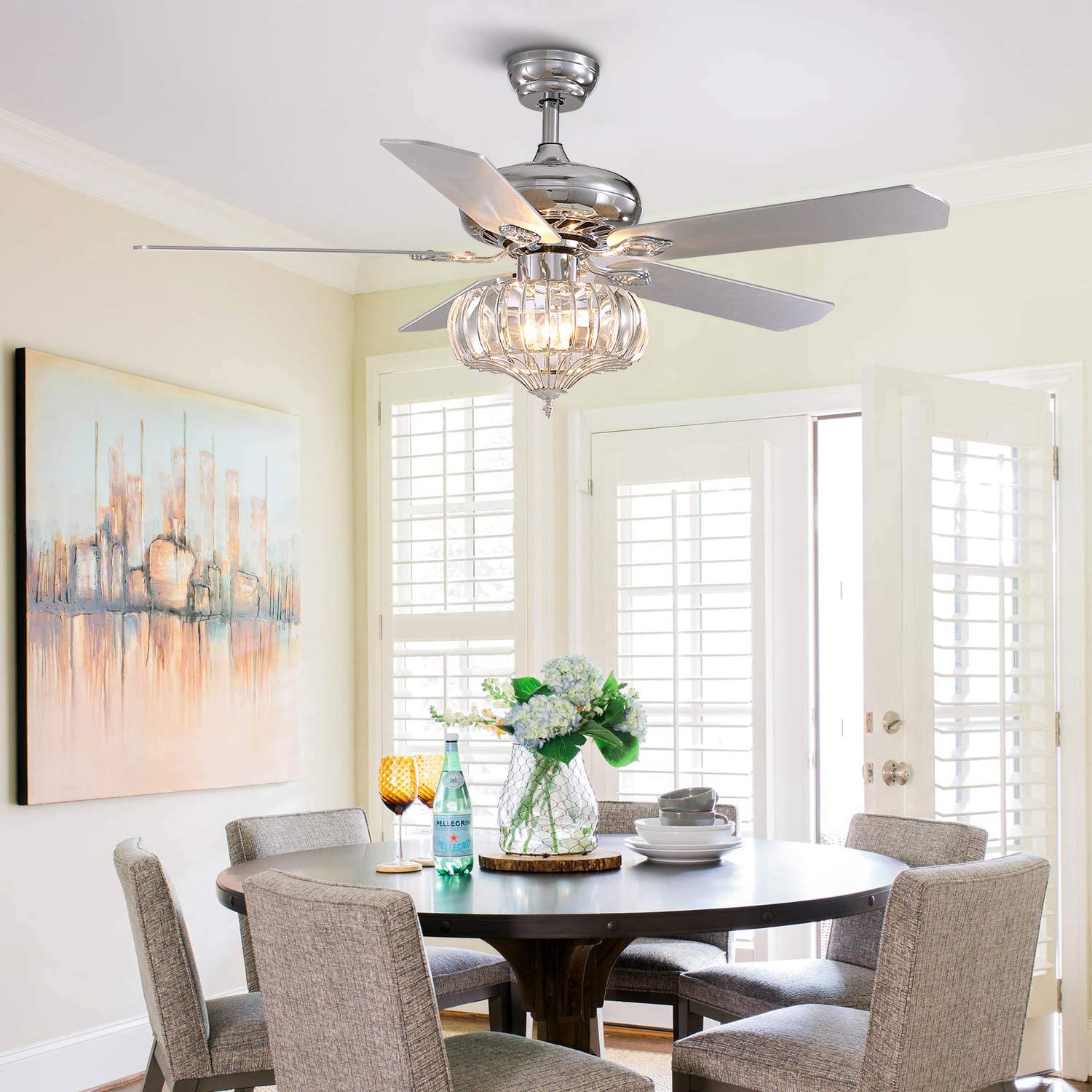
Most ceiling fans come with a light kit, but if you’re installing in an area with ample natural light or lighting already installed, it’s perfectly fine to go with a non-light option. If you’d like one with lights, the next thing you need to decide is lighting output:
- LED bulbs: Highly energy-efficient option with an average lifespan of 50,000 hours. Bulbs can be replaced easily to change the style or color temperature.
- Integrated LED light kit: LED bulbs are built directly into the fan and last a decade or longer.
Silent Mode
Say goodbye to your squeaky old fan and hello to a peaceful sleep. Be sure to double-check the room’s dimensions and select a fan with a hugger mount, which secures flush to the wall to prevent wobbling and shaking. Don’t sweat it if your room has ceilings that are too high for a hugger mount. Using a downrod that’s the right length will keep extra noise to a minimum.
Circling back to AC/DC, DC motors are quieter than AC motors. So, when you invest in a ceiling fan with a DC motor, you’ve got a better chance of getting a silent fan.
Outdoor Fans

Outdoor fans are ideal for cooling down your porch, patio, or sunroom. Plus, it can perform double duty by illuminating the space if you go with a lighted option. It’s important to consider your environment when purchasing an outdoor ceiling fan. Do you have a lot of rain during certain seasons? What about humidity? Snow and ice can have an effect on how your ceiling fan functions. Outdoor fans are made of sturdy materials, typically metal, to prevent moisture damage and warping caused by harsh outdoor elements.
Damp-rated ceiling fans are meant for sheltered areas that indirectly experience moisture.
Wet-rated ceiling fans are made to uphold battle in rough weather conditions. Never hang an indoor fan outside- damage to the fan and your home can ensue.
Fan Installation

Let’s face it: Fans are heavy! They’re also tricky to wire, which is why you should always hire a licensed electrician to install them for you. Make super-duper sure that your ceiling is strong enough to support the fan in the location you’ve selected to have it attached. You need to make sure there is blocking in the installation location that can support the fan; if you’re unsure, ask your electrician. Have all the parts handy from the box your fan came in so your electrician can work their magic with ease.
What if it wobbles? It’s only natural after some time that your fan’s placement may come a bit loose. This happens when the blades become unbalanced, causing uneven spinning and strange sounds, but you can fix this!
Turn off the fan, wait for a complete stop, and clean away any dust buildup. At the same time, check for any loose blades, brackets, or mounting hardware and tighten them up. Then, turn it back on and see if that helped. If not, use the fan balancing kit included with your fixture. This involves attaching the balancing clip to a blade one at a time and turning the fan on and off after each one until you’ve found the problem blade. Then, move the clip up and down the blade and use the weight included in the kit to balance the blade. You can use this for any other blade as needed.
A Few Styles We ‘Fan’cy
And there you have it, folks, the do’s and don’ts, the ins and outs, the ups and downs of ceiling fans. Betcha learned more than you thought there was to know about these puppies! Now go, circulate that knowledge, and get yourself some air!
There’s always more style to be had with DezignSpace! You should pop on over to the Store and check out a curated selection of gorgeous goodies we know you’ll LOVE!
A Better Bulb: The 3 Colors of Light and Why They Matter! (The Secret to an Insta-worthy Space)
Sunday, July 25, 2021 at 3:13pm

Are you guilty of committing this cardinal lighting sin? When replacing your light bulbs, do you just go down the aisle, grab the first one you see, and call it good? A bulb is just a bulb, right? Not. At. All. In fact, choosing the right color temperature bulb can make all the difference between creating a lackluster or luminous space. 🤩
Let’s get you going on the bright path… 🕶️
 Color Temperature
Color Temperature
Most lighting products come in a range of color temperatures and varying hues of white. Correlated color temperature, or CCT, is a term used to describe how warm or cool the color of light appears. Light temperature is measured in Kelvins (K), and its scale ranges from 1,000K to 10,000 K.
To help give you a visual, the light from the sun at midday (at the equator) is about 6000K and appears very bright blue-white, while at sunset, the light is around 2500-2700K and emits a very warm amber glow. Generally speaking, Kelvin temperatures for residential applications are between 2500K and 4500K. Warm light is anything 3000K and below, while cool light is 4000K and above. Between those colors, at around 3200K, it is considered neutral, which can look either warm or cool depending upon nearby furnishings and other lighting conditions.
Kelvin (K) Temperature Range:
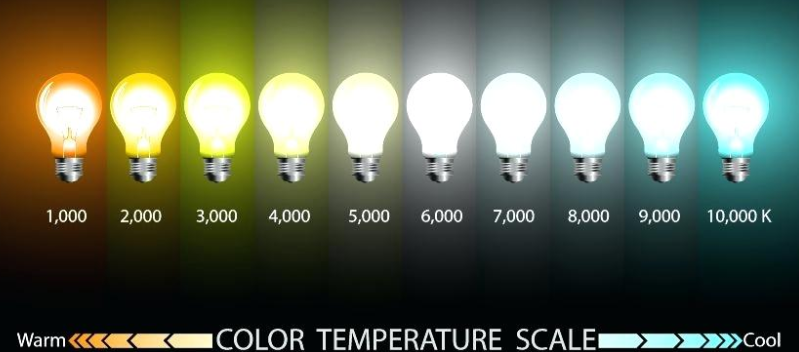
2200-2700K: a warm light, great when used in ambient lighting, often referred to by some vendors as “candlelight.”
3000-3200K: a soft white light perfect for kitchens and bathroom vanities where detailed tasks are performed.
4000-4500K: a bright white light ideal for workspaces, garages, and home gyms.
5000K and higher: a bright bluish light primarily found in commercial applications, hospitals, etc.
PRO TIP: Color temperatures 4000K and above are very bright with a bluish cast and are best used in commercial applications- it’s way too harsh for a home’s interior. One exception is task lighting in a garage workshop or something like that, where bright lights are helpful or necessary. 🔨
Lumens
The higher the lumen level, the brighter the amount of light, regardless of color temperature. Lumens are the output or the amount of light a bulb produces. We typically think of the brightness of a bulb in terms of wattage; however, wattage actually references the amount of energy needed to operate the bulb. The lumens scale measures the brightness of a bulb and should be factored in when choosing the correct bulb for your space. If you are performing detail-oriented tasks, you want as high a lumen level as you can get.
Using Color Temperature in Your Home
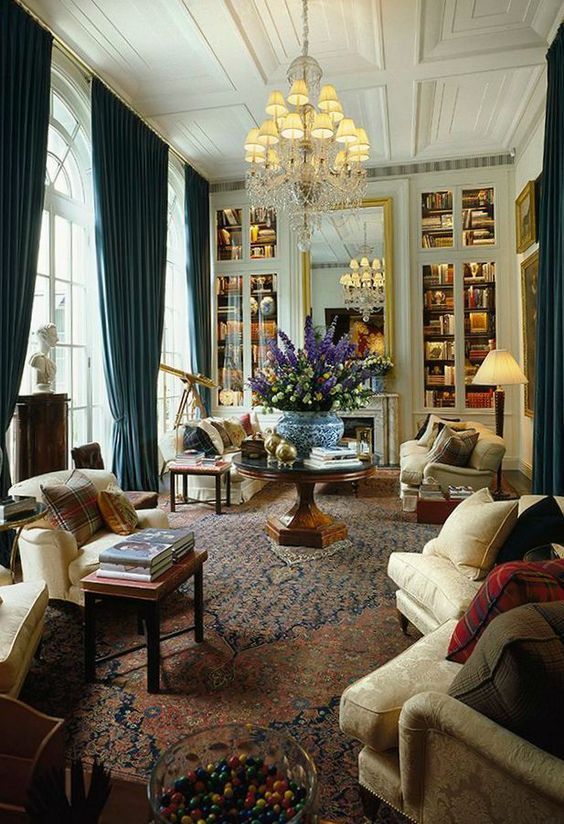 So, how do you know if you need cool, neutral, or warm? That will depend on how you plan to use the light, which room it’s in, your geolocation, as well as the overall vibe you want to create in your space.
So, how do you know if you need cool, neutral, or warm? That will depend on how you plan to use the light, which room it’s in, your geolocation, as well as the overall vibe you want to create in your space.
A few things to consider when selecting the right light temperature are the colors of your walls, floors, and furnishings. If your home mainly consists of colors on the cool side of the spectrum, like blues, greys, blacks, and crisp whites, then a neutral light temperature (approx 3000K or 3200K) is likely the ideal choice for pairing well with your decor.
Likewise, if your home has many natural materials like warm-toned hardwoods, cabinets and furniture, woven rugs, and furnishings in creams, tans, reds, or oranges, then warm to neutral light temperatures will be your best bet.
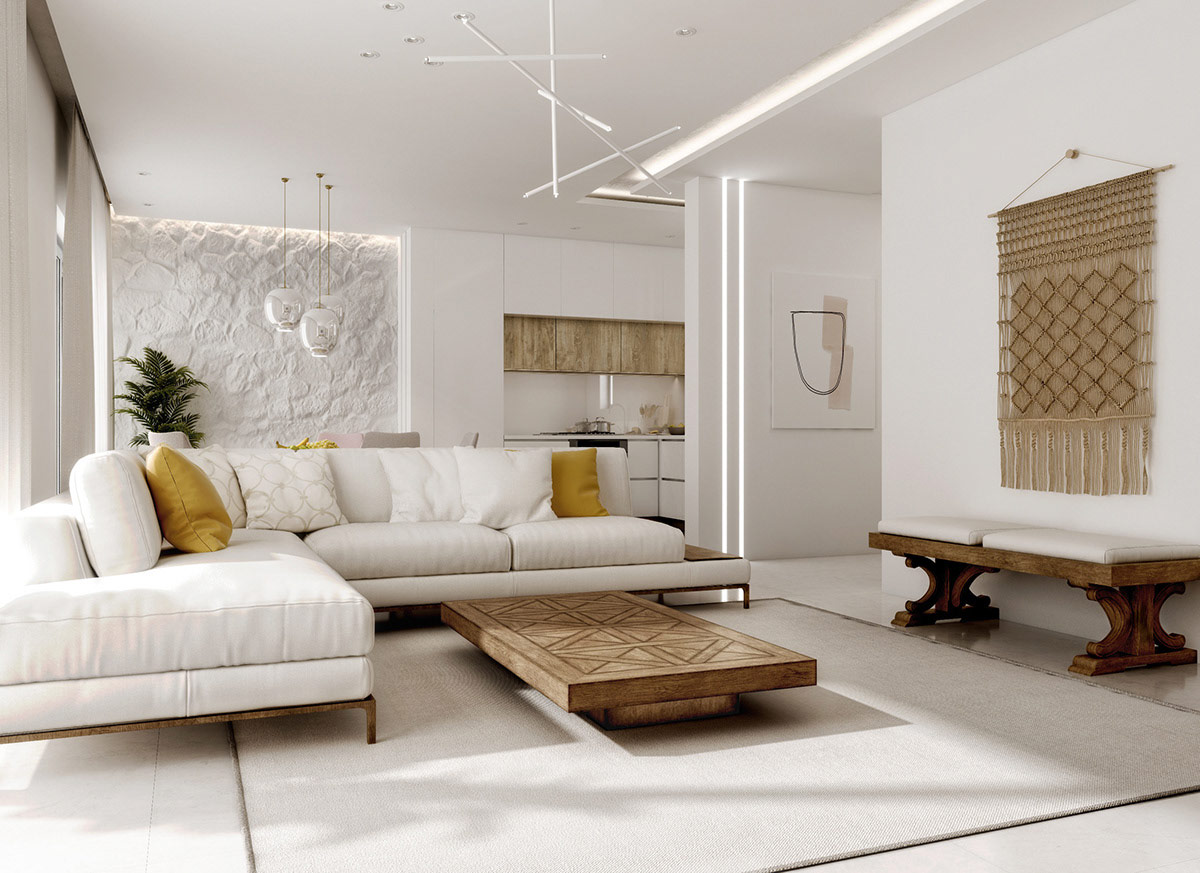 Another thing to consider is the design style of your home. Traditional and Transitional style homes typically look best around 2700K warm white light because it gives off a glow very similar to candlelight, which is reminiscent of classic houses. Keep in mind that this applies to decorative fixtures (like floor lamps, table lamps, sconces, chandeliers, and pendants) as opposed to ambient lighting, which all need to be around 3000-3200K.
Another thing to consider is the design style of your home. Traditional and Transitional style homes typically look best around 2700K warm white light because it gives off a glow very similar to candlelight, which is reminiscent of classic houses. Keep in mind that this applies to decorative fixtures (like floor lamps, table lamps, sconces, chandeliers, and pendants) as opposed to ambient lighting, which all need to be around 3000-3200K.
The clean lines and simple design of Modern and Contemporary homes generally look best with either balanced whites or a neutral-toned light, but keep in mind that for specific spaces, like the bedroom, warm light temperatures will still be the best choice.
Let’s talk a bit more about that…
Temperatures by Room
Before we get into the room-by-room breakdown, there is something you must know: dimmers aren’t just a bright idea; they are a MUST. The ability to dim can immediately transform a space and create ambiance; plus, it gives you much more flexibility to accommodate your day-to-night lighting needs. Dimming also saves energy and extends the life of your fixtures and bulbs.
Note- If you have ceiling fixtures that are LED, you will need to get dimmable wall switches that are specific to LED fixtures. They may be a little more pricey, but they are worth every penny.
By the way, if you have a plug-in lamp that doesn’t have a dimming switch- you can buy a dimmer switch for it at a home supply store.
BEDROOM
For a relaxing atmosphere that allows you to rest, unwind, and ahem…set the mood, 😉 keep the lights warm and at low brightness.
Recommended color temperature: 2500-3000K
BATHROOM
Because the bathroom is a space where we perform various tasks, whether it’s detail-oriented like applying makeup and shaving or relaxing in a deep soaking tub- either way, the light needs to be both functional and flattering.
Keep the light cooler and brighter so it remains functional, but remember, a bright bathroom can quickly transform into a serene spa thanks to your handy-dandy dimmer switch.
Recommended color temperature: 3000-3200K
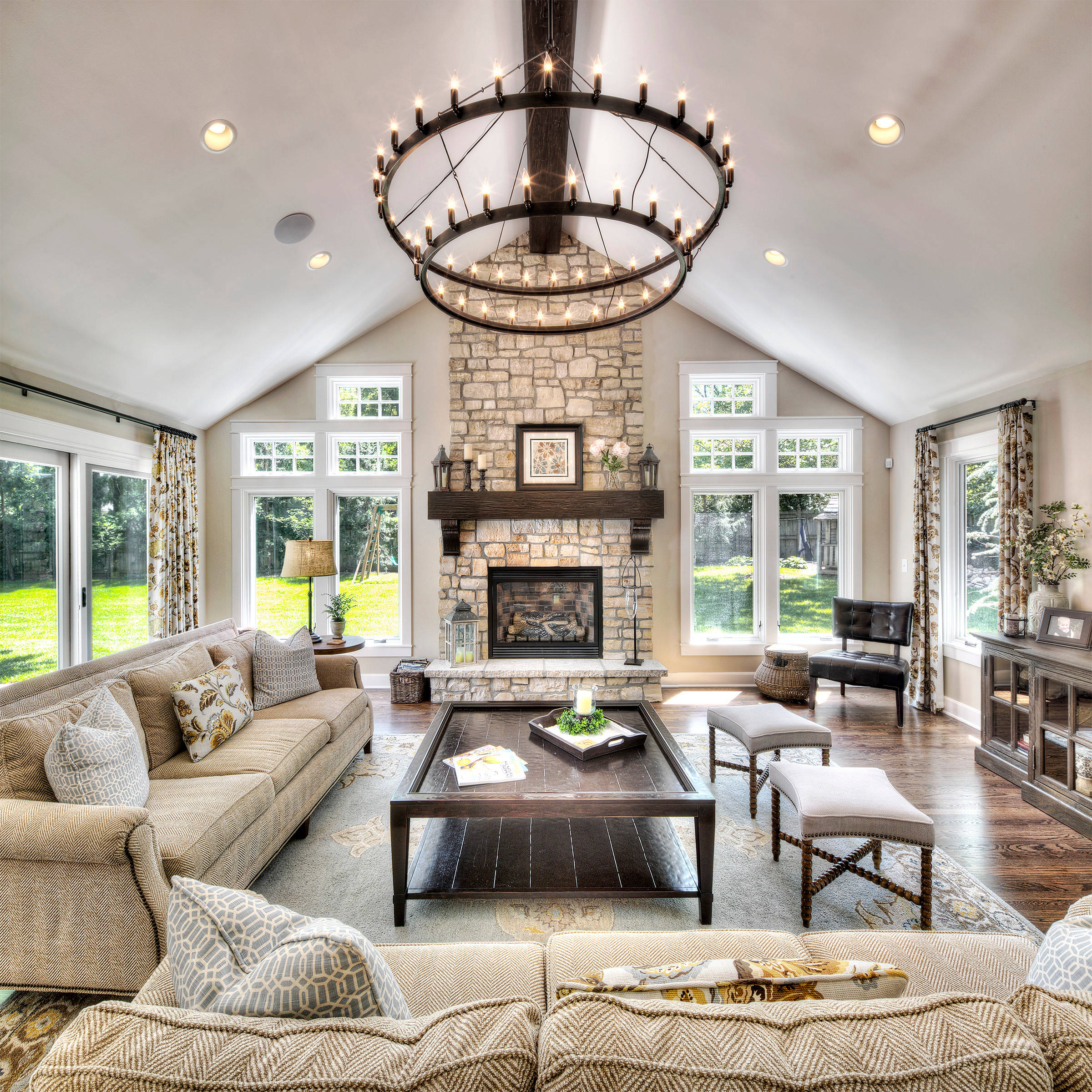 LIVING ROOM
LIVING ROOM
Another multipurpose space, you want to create an inviting atmosphere that you’ll want to kick back in that’s also perfect for entertaining.
Again, the dimmer comes in handy when setting the mood for anything from game nights to movie marathons. 🍿
Recommended color temperature: 2700-3000K
DINING ROOM
You’ll want lighting that’s a balance between creating a mood while also being bright enough to see what you’re eating. Have we mentioned how essential dimmers are yet? 😆
Recommended color temperature: 2700K – 3000K
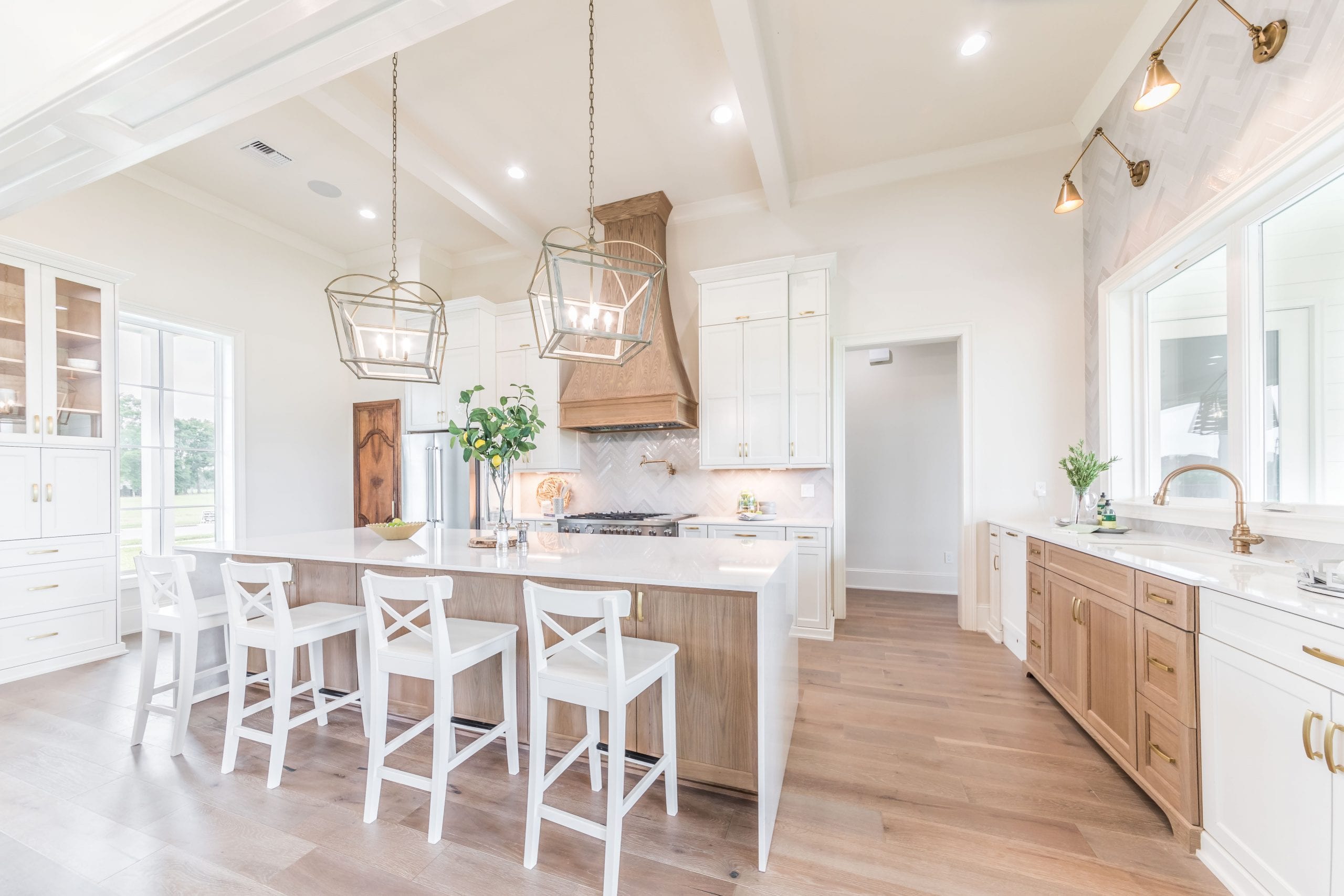 KITCHEN
KITCHEN
Kitchens are another versatile space, so the color temperature can vary. A fail-proof neutral 3000K white will look fantastic no matter what.
PRO TIP: Make sure all the different sources of light in the kitchen (ceiling, under-cabinet lighting/task lighting, and over the island) are the same color (Kelvin). This will keep your schematic color story cohesive.
Recommended color temperature: 3000-3500K
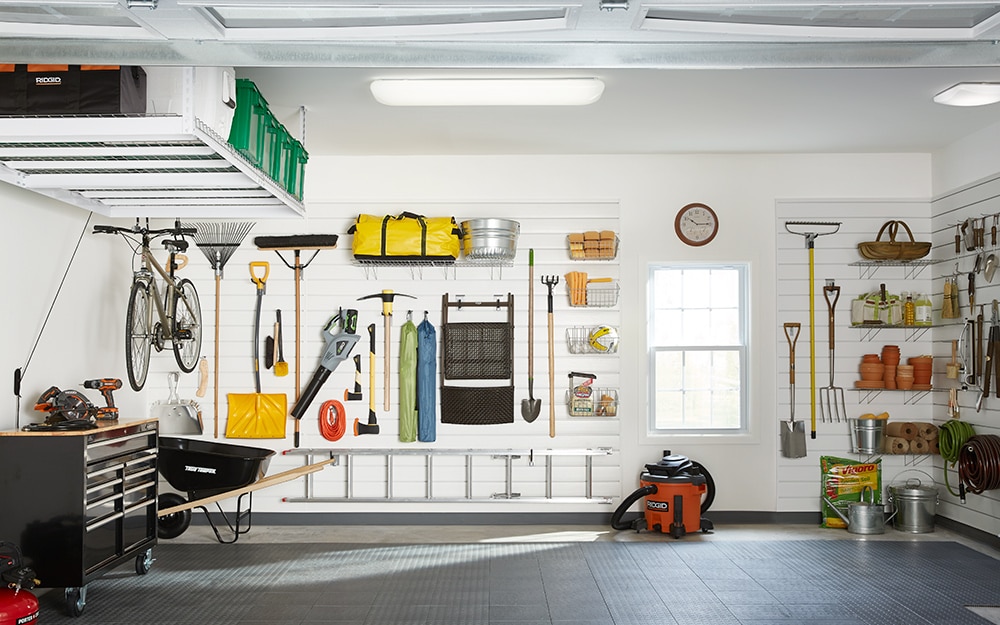 WORKSPACE / GARAGE
WORKSPACE / GARAGE
To stay productive and focused, you’ll want a light that’s bright and functional. 4000K may be a good choice for a workspace/garage or a home gym that you use primarily during the day.
However, if you get enough daylight coming from your windows, then go with something warmer, so it’s suitable for the evening.
Recommended color temperature: 3000-4000K
There you have it! You’re ready to create a lighting scheme that will be on point from day to night! Now go set the mood!
What’s that you say? You’ve got your lighting scheme all dialed in, with at least 3 sources of light for each space? Groovy! If you don’t have a clue as to what we’re talking about, allow these brilliant resources to enlighten you:
Get the Glow Down: The 3 Types of Lighting Your Home MUST Have and Choosing the Right Lighting for Your Home
In a shopping mood? Hop on over to The Store for our personal lighting picks!
Get the Glow Down: 3 Types of Lighting Your Home MUST Have
Sunday, July 25, 2021 at 3:50pm
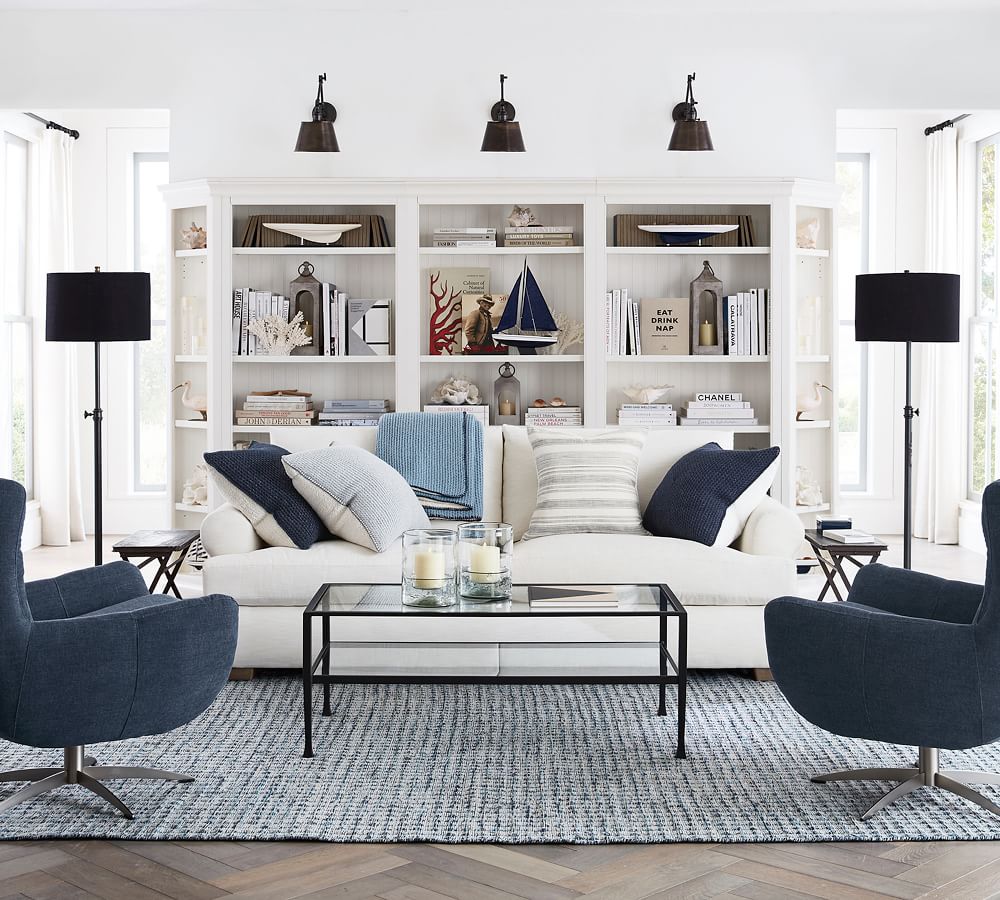
Are you in the dark when it comes to creating a lighting plan for your space? Well, it’s never too light to learn! 😆 (We should warn you now this is going to be a punny post!) Read on to learn how to create the perfect lighting scheme for every room in your home!
Get ready for some serious enlightenment…
Let’s start with the two most essential factors in lighting: color and intentionality.
Color

Color is defined by the light in which it is viewed. For example, a surface or object will take on an entirely different color in the daylight than when viewed underneath LED, fluorescent, or incandescent lighting. Because color is a function of light, the light will always determine the final outcome of how a color appears.
Intentionality
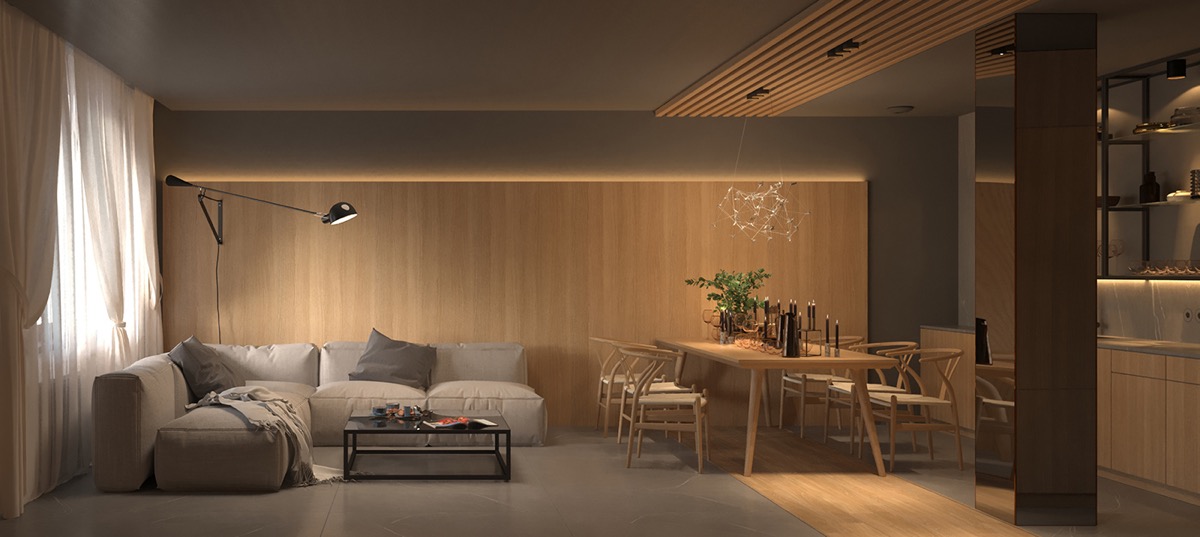
Think about all the functions your lighting can perform in a space. When a person enters a room, their eye is being directed by the lighting conditions. For instance, a directional light could highlight an art piece on the wall, or perhaps there is a statement lighting piece that is directly in the center of the room, acting as a focal point.
Ultimately, your lighting needs to serve both practical and mood-setting purposes. One of the biggest lighting mistakes people make is trying to get by with a limited range of lighting types. This will never create a pulled-together look! To get a balanced and beautiful space, you need to incorporate three different sources of light: ambient, task, and decorative.
Lighting Categories You Gotta Know…
Ambient
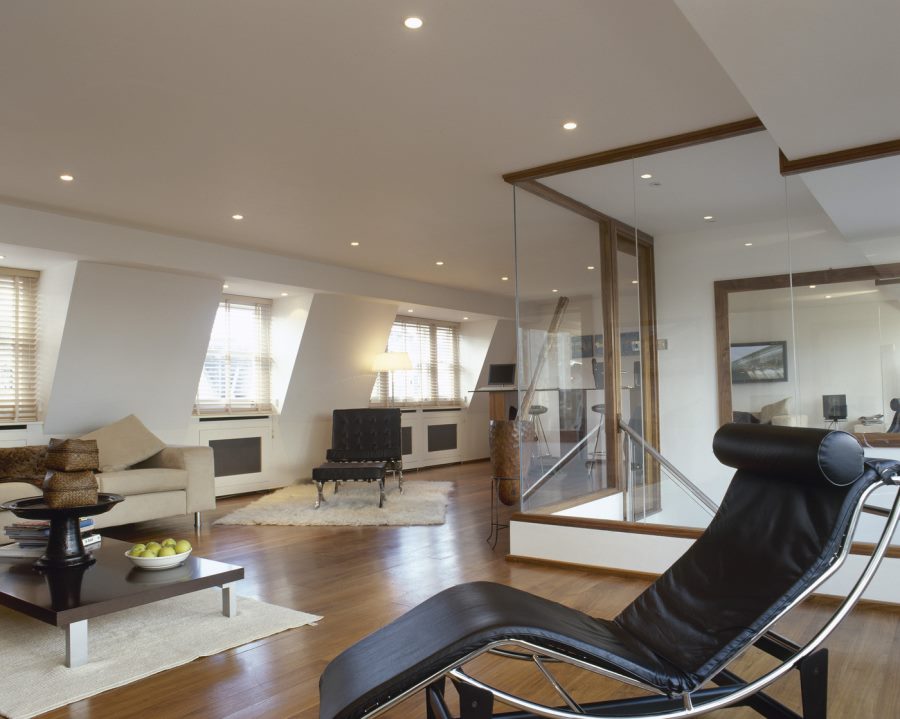
Also known as general lighting, this is lighting that illuminates all around you, whether it comes from a window or a ceiling fixture.
When it comes to ambient lighting, you actually have to consider using lighting fixtures to give 360 degrees of light. The goal is to fill the majority of the room with light and increase visibility overall.
PRO TIP: Don’t overlook track lighting as a fantastic ambient lighting solution! There’s major flexibility with track lighting: you get multiple lights without having to punch a bunch of holes in the ceiling! We usually recommend the flush-mounted low voltage type for a sleeker look, which focuses on the light, not the fixture.
If you want to explore the world of track lighting, be sure to check out our favs at The Store.
Task
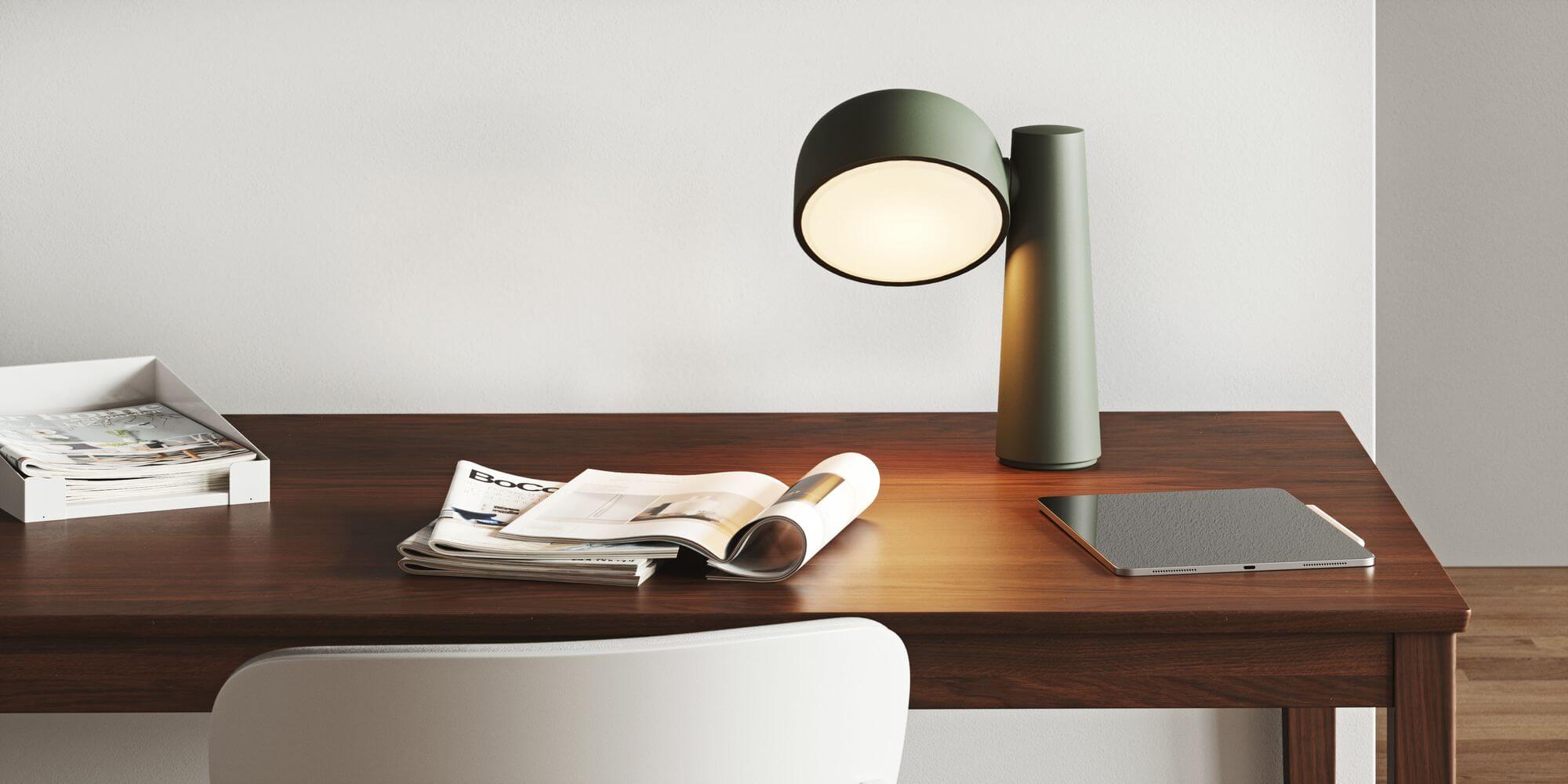
This type of lighting is used in workspaces, whether that’s the kitchen, bathroom, office, laundry, or a reading lamp next to a chair. Task lighting includes things like under cabinet lighting and vanity lights- it’s something very specific that shines light down to a surface or an area that you need to see really clearly and helps you perform whatever task you need to do.
Decorative
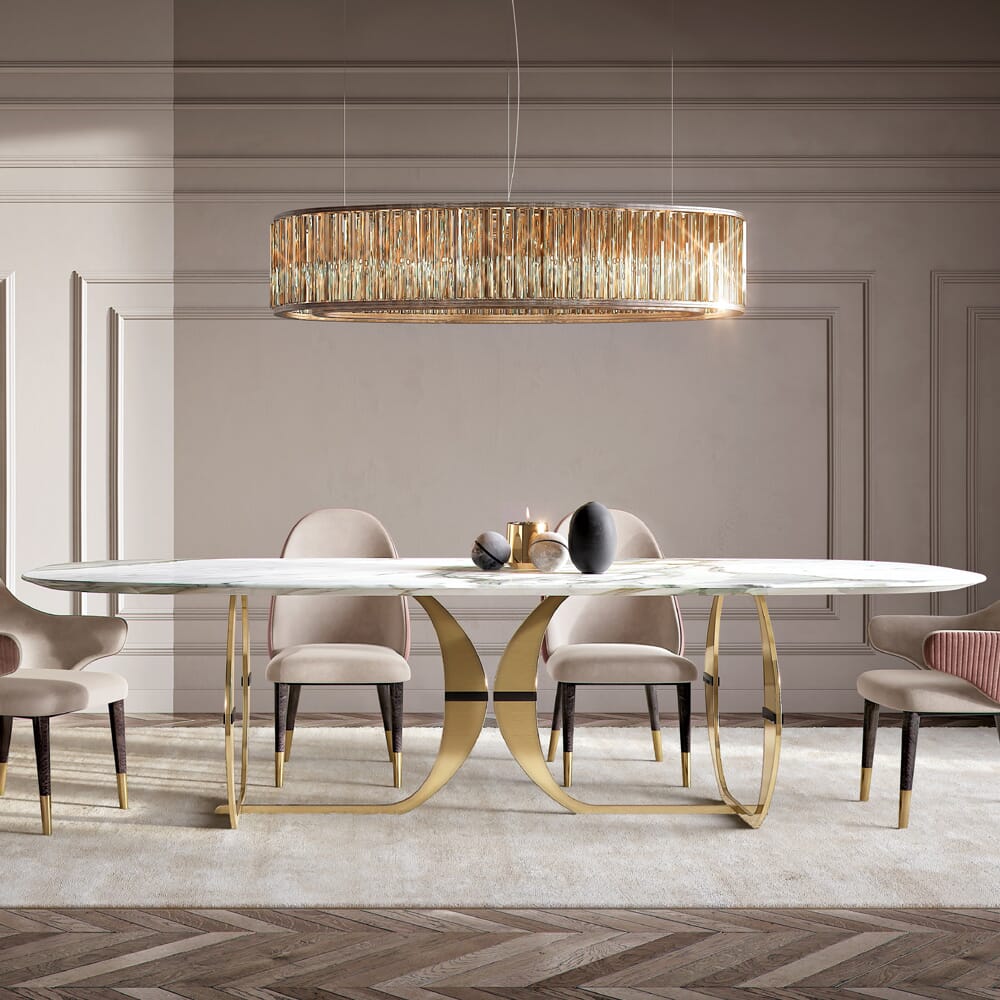
Yay, our favorite! 🤗 Lighting, after all, is the jewelry of a home. What’s brilliant (pun alert) about decorative lighting is it can give you a lot of textural play in the space while also allowing for plenty of opportunities for flexibility.
Let’s say you’re hosting a fabulous dinner party, and you want to create a mood by keeping the lights down low and focusing only on the table, you know, very ooh-la-la…decorative lighting is how you’ll achieve that.
These next two lighting categories aren’t necessarily must-have lighting sources, but if you’re looking to amplify the ‘wow’ factor, consider what they can do for your space:
Accent
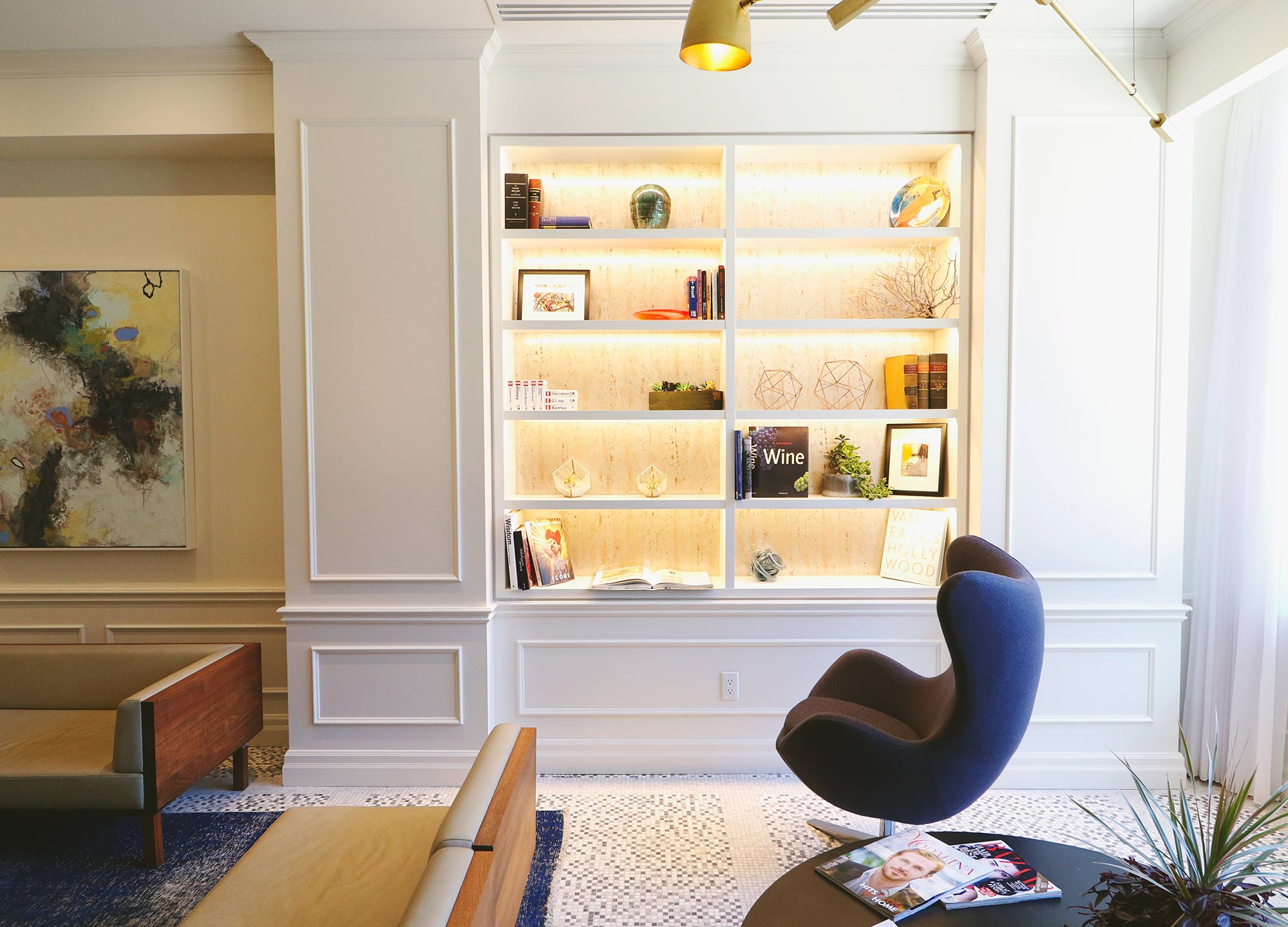
Although the term accent lighting is somewhat broad, it essentially applies to a type of lighting that illuminates a space or area while not acting as a focal point. Accent lighting allows you to draw attention to a specific area or object in the room. For example, picture lights are used to highlight a piece of art, while under-cabinet and toe kick lights also serve both an aesthetic and functional purpose.
PRO TIP: A fantastic accent lighting option for both homeowners and renters alike is LED light strips. Use it for uplighting and downlighting behind shelves or highlighting glassware and bottles in a home bar; you can put them practically anywhere! It’s an amazing high-design detail that is not off-limits to people who rent.
Specialty Lighting
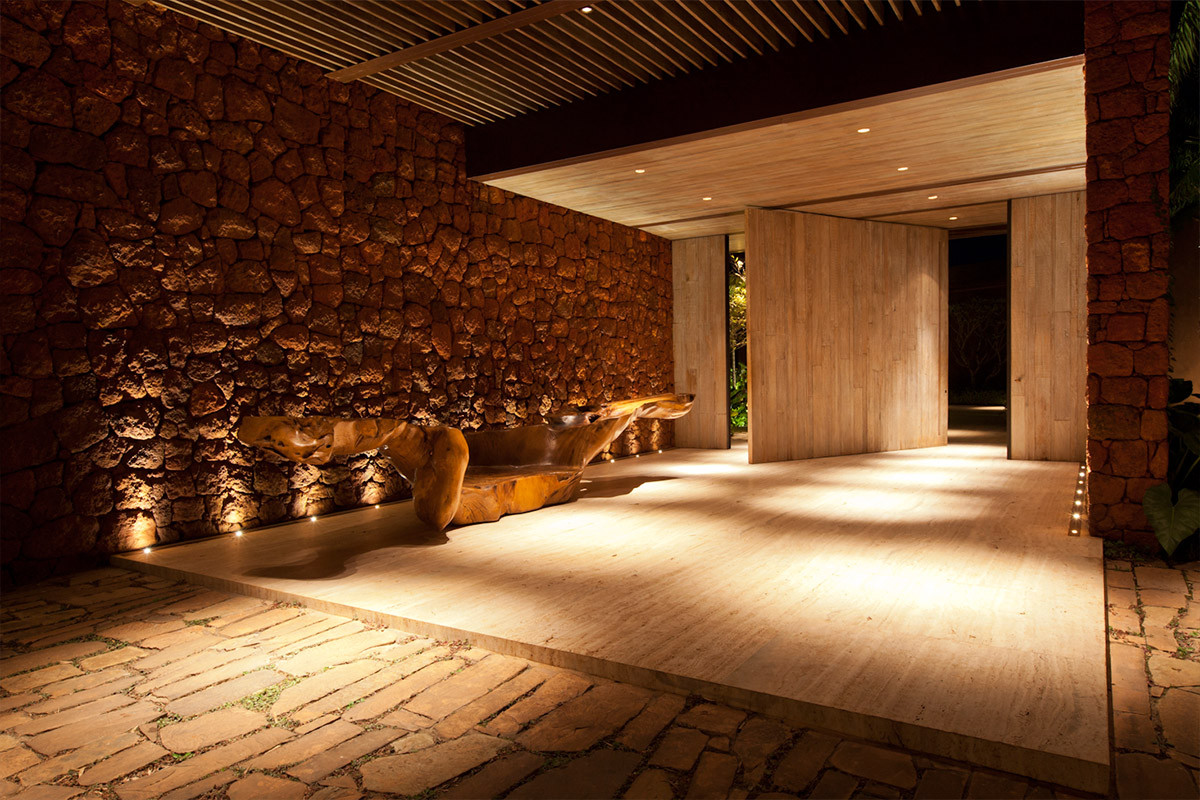
Specialty lighting is used to create accents or highlight specific features in the space, whether that’s a piece of artwork or a highly textured wall. It is used when directing your eye to a particular pinpoint; in fact, many specialty lighting fixtures will have a light cone of only 15 degrees, meaning that it’s a very narrow beam of light, while others will go as wide as 45 degrees. When considering your specialty lighting plan, you want to keep in mind what it is you want to light and/or where you want to direct the light’s focal beam.
Popular Lighting Fixture Types
Recessed Lights
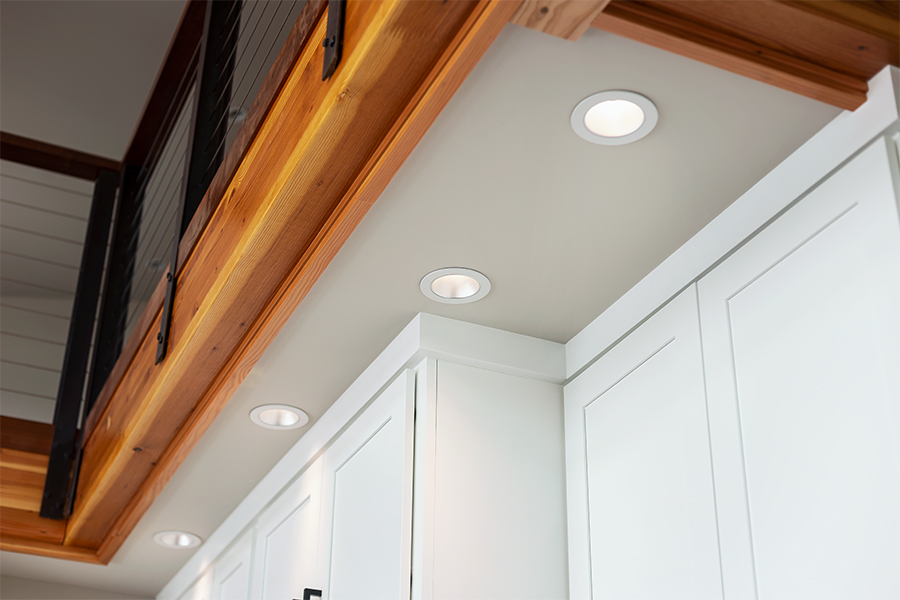
Also called can or pot lights, these are lights that are flush with the ceiling and commonly used to create flood ambient light; however, you can change the trim ring to create a more focused light beam.
Flush Mounts
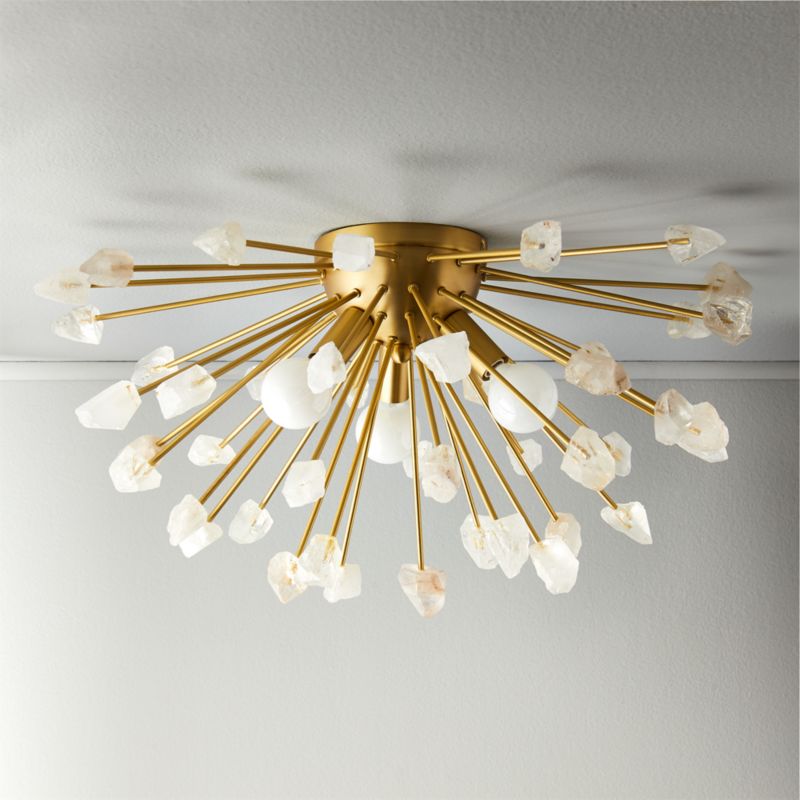
Available in a huge range of sizes and styles, these are fixtures that mount flat against the ceiling.
Semi-Flush Mounts
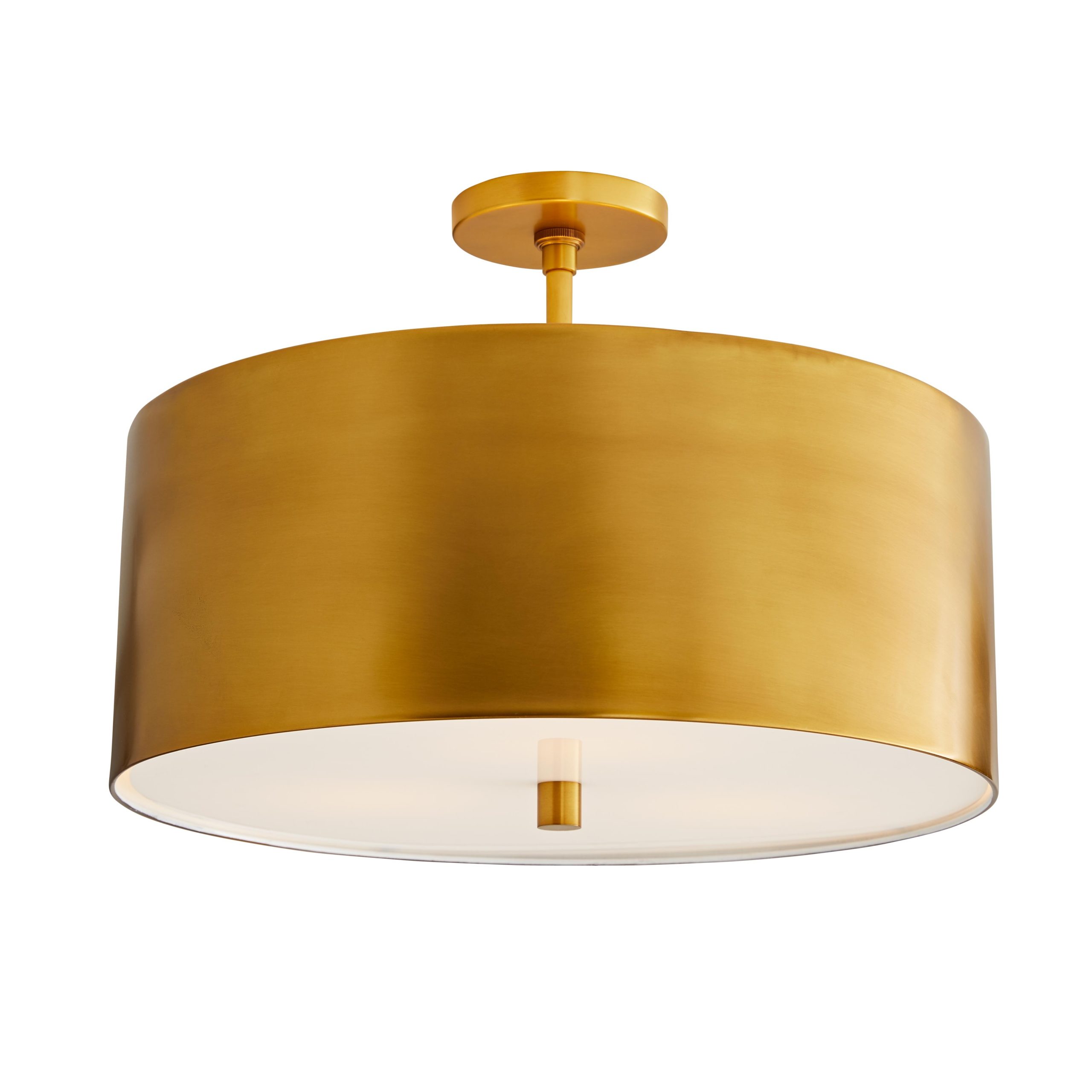
Similar to the flush mount in size and style versatility, however, these fixtures hang 4”-8” below your ceiling.
Chandeliers
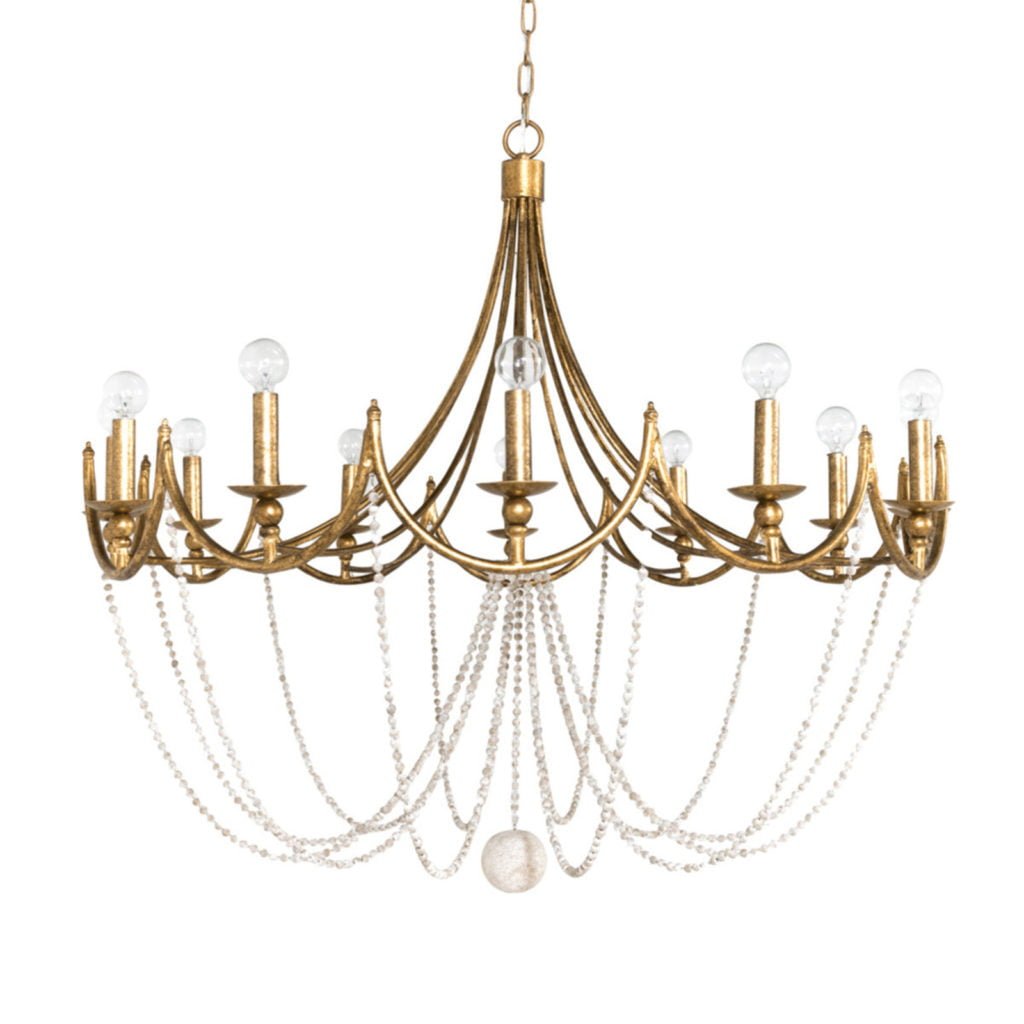
Chandeliers usually have 1-3 layers of lights and can be anything from very grand to screamingly contemporary.
Cove Lighting
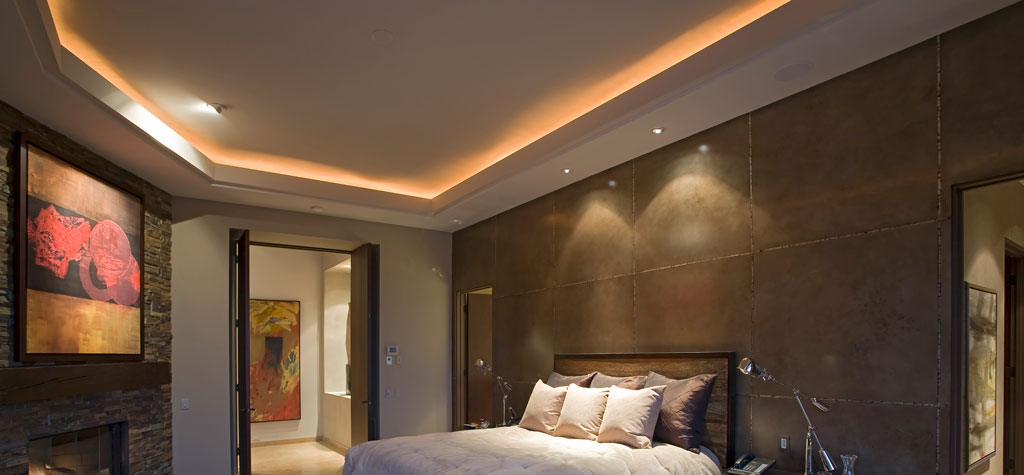
This type of uplighting is either incorporated into a wall or installed within a ceiling coffer to provide diffuse overall illumination.
Track lighting
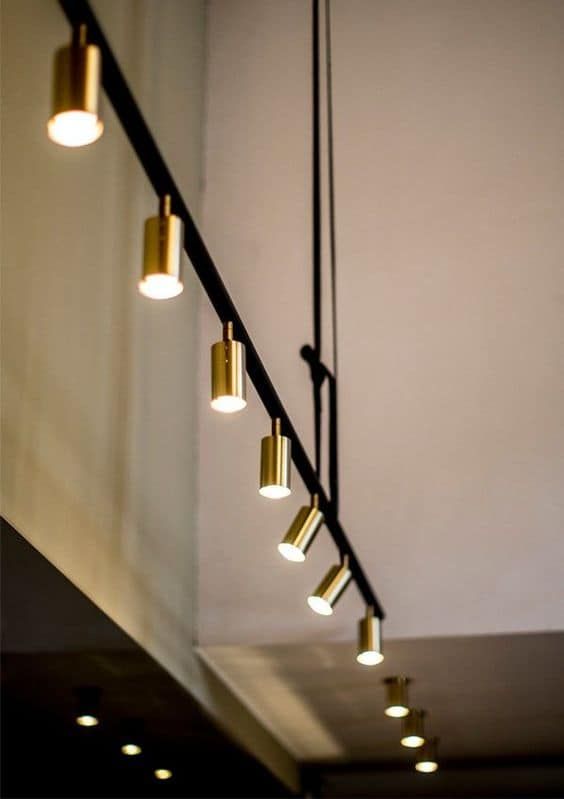
Several individual (usually directional) lights hang from a track that you can either mount to the ceiling or suspend, depending on the height and overall effect you want.
Single Pendants
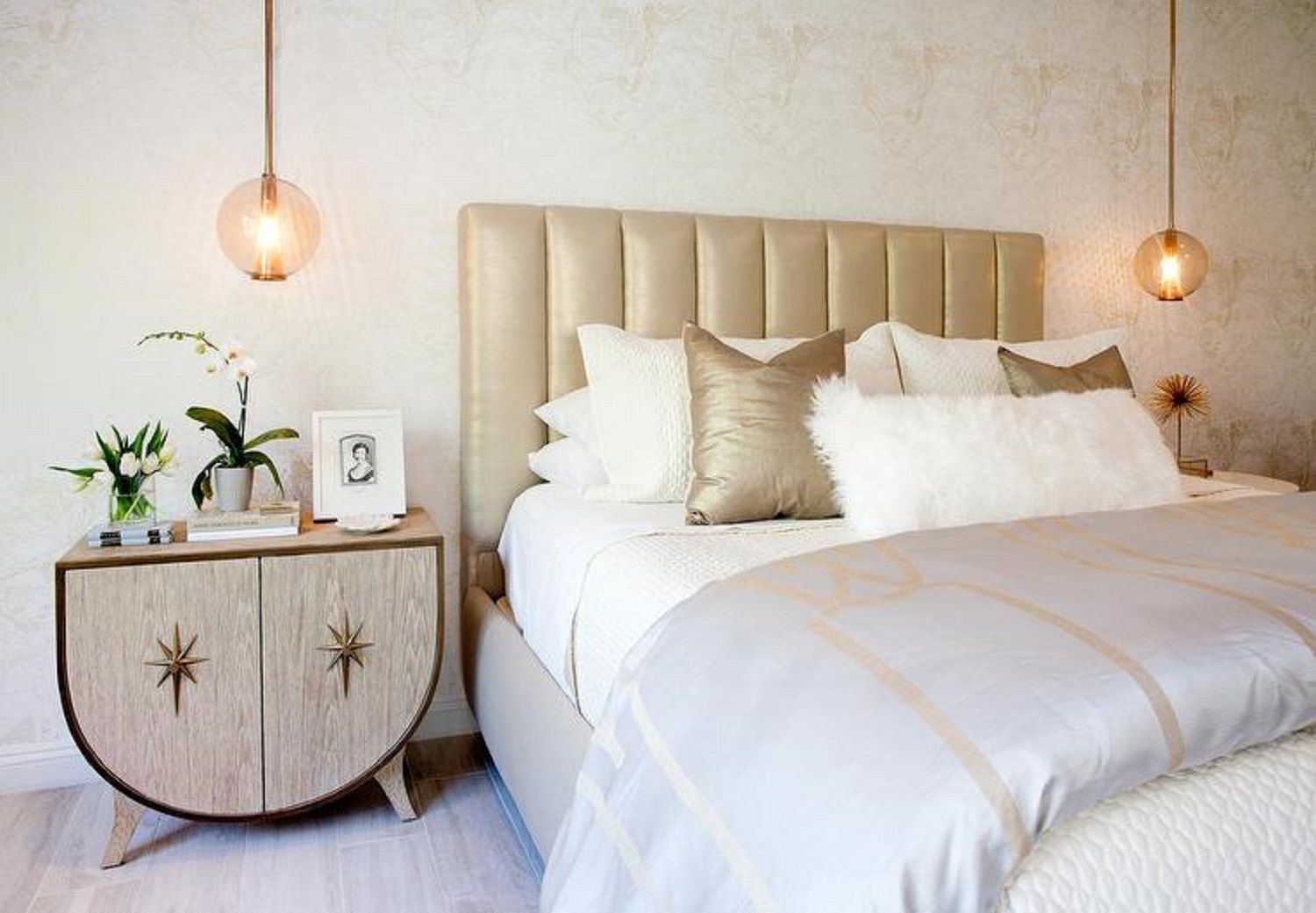
A single light fixture that is suspended from the ceiling by a cord, chain, or rod.
Mini Pendant
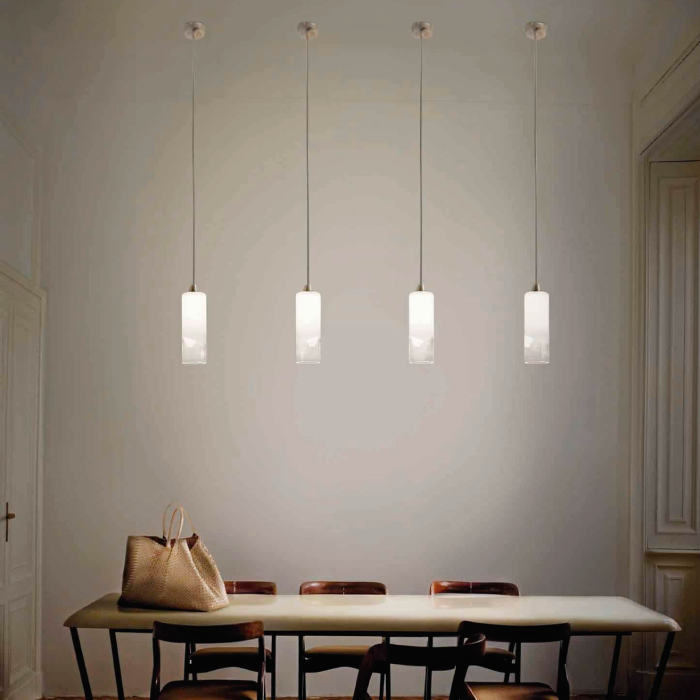
A smaller version of standard-sized pendant lights is usually hung in groups of 3-5 over kitchen islands, powder baths, or dining room tables.
Sconces
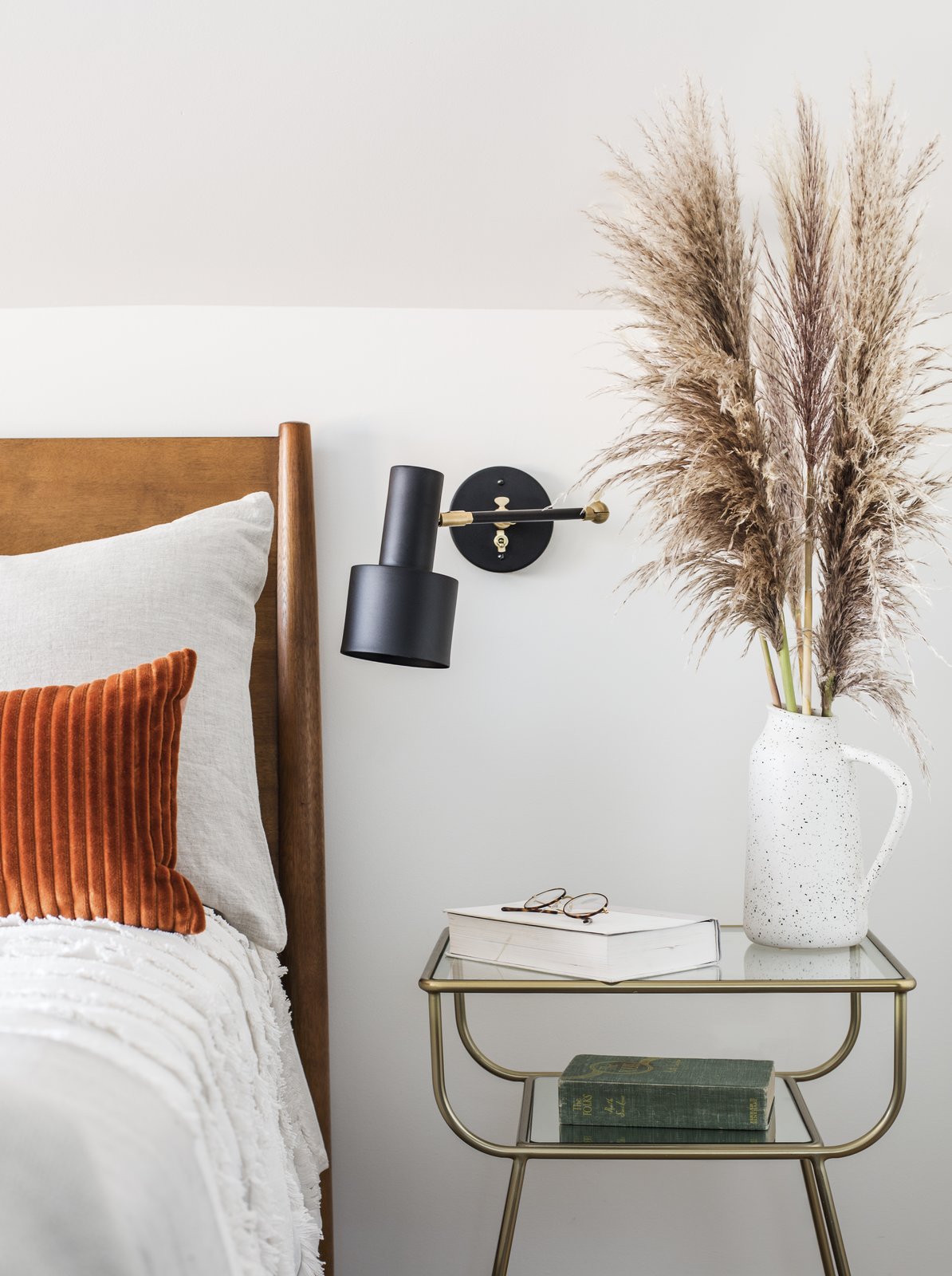
They are technically wall-mounted fixtures that can be found in various spaces, like in a hallway or flanking a bathroom mirror. One fundamental rule to follow with hardwired sconces is to pick the fixture first and THEN locate its place on the wall. Once you cut a hole in the wall, it’s a real pain to have to fix! Trust us on this…
Floor Lamps
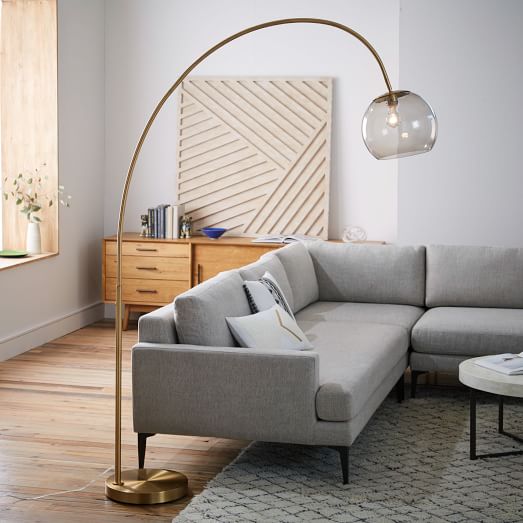
Because many newer builds don’t have ceiling lights, you will need to incorporate uplighting in your space somehow, and floor lamps are a great way to go. They can pull double duty as a task lamp if they provide downlighting as well!
Table Lamps
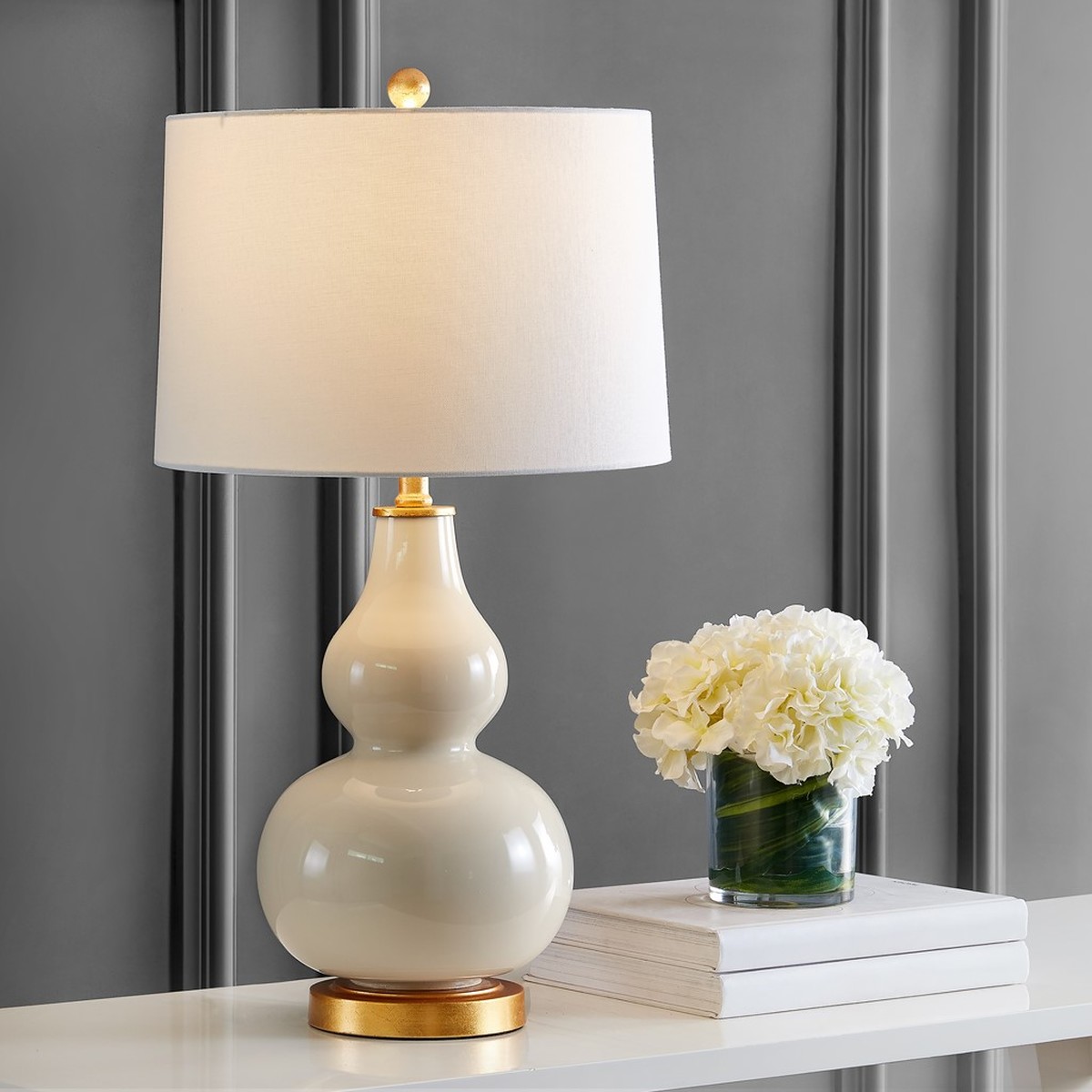
Table lamps come in three categories: big table lamps that are tall, important, and decorative in nature, desk or work-related task lamps, and smaller table lamps that serve as fun accents.
Floor Uplights
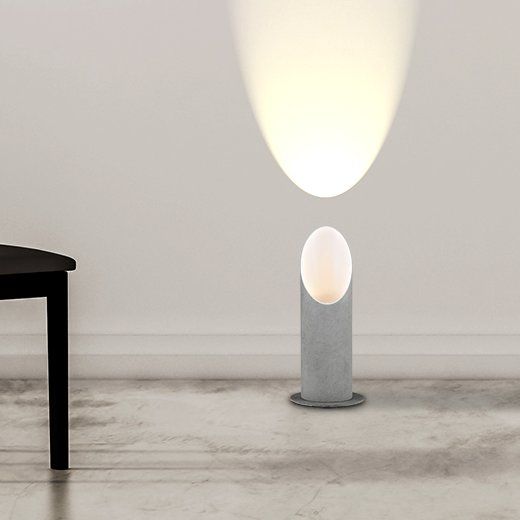
These little cylindrical floor lights allow you to create interesting shadow effects on the wall by highlighting sculptures, plants, and more.
Picture Lights
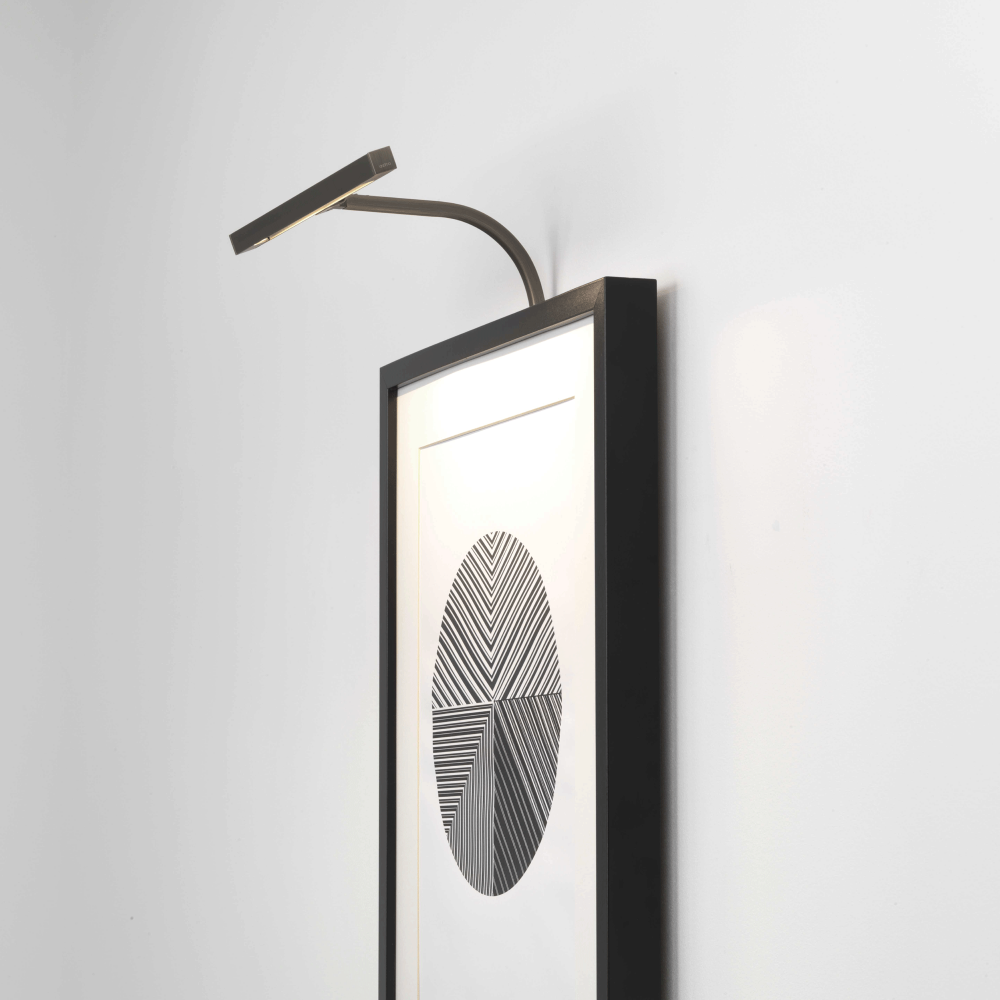
Mounted either to the wall or on the frames of artwork, picture lights not only ensure your favorite art is properly on display, they really can add to the overall ambiance of a room.
Toe Kick Lighting

Toe kick lighting is an amazing and unexpected way to add warmth and depth to a space. It can be used to create a gorgeous glow beneath your kitchen cabinetry, plus it also makes a fantastic night light in the bathroom!
Puck Lights
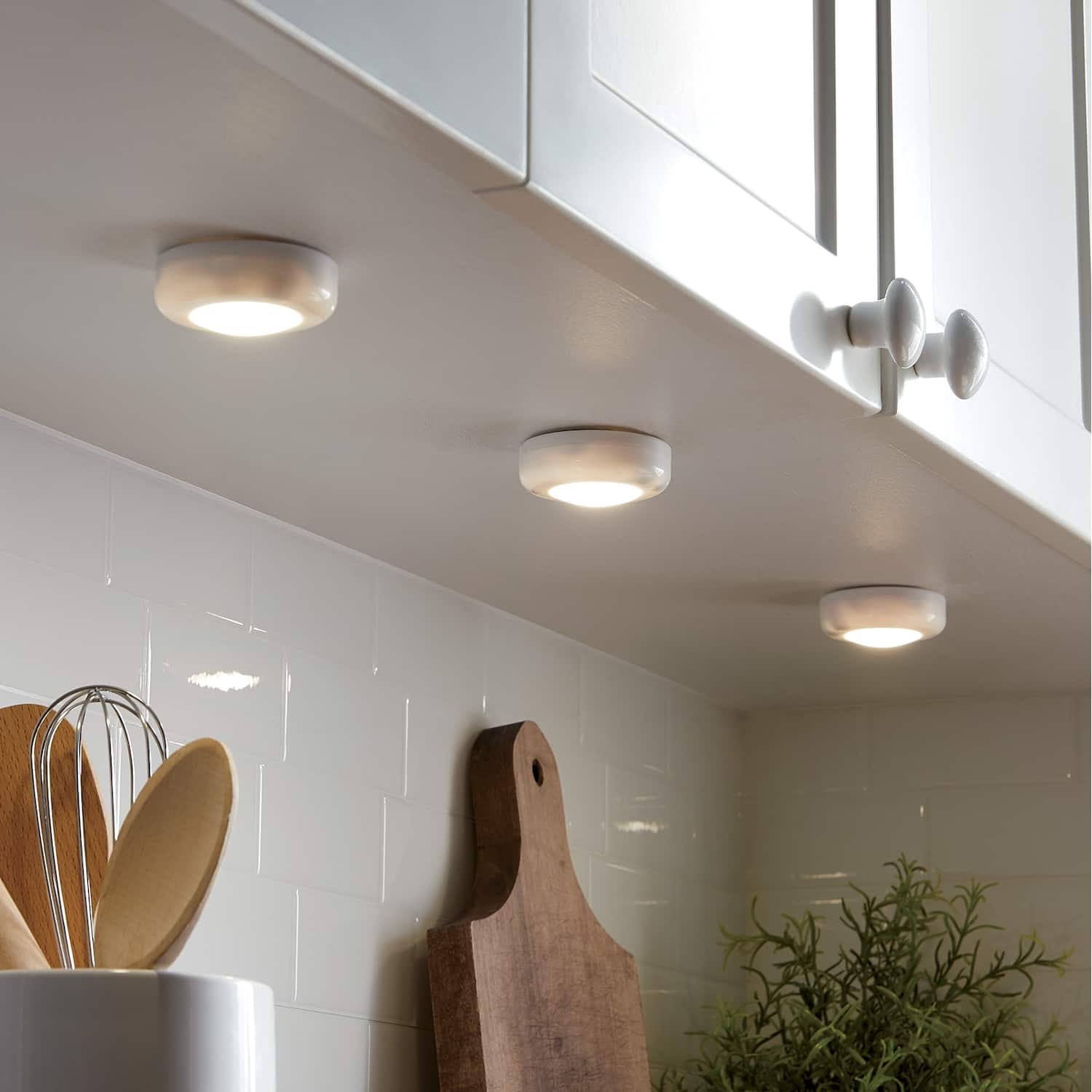
A round LED light that mounts easily to a surface with a stick-on backing. Highly versatile, you can put them absolutely anywhere! Place them in your glass front kitchen cabinets or your closet shelves; you can even put one in an opaque vase to make it glow like a candle! Experimenting with these is inexpensive and will give your space an intentional, bespoke, and well-thought-out look.
A Bit About Bulbs
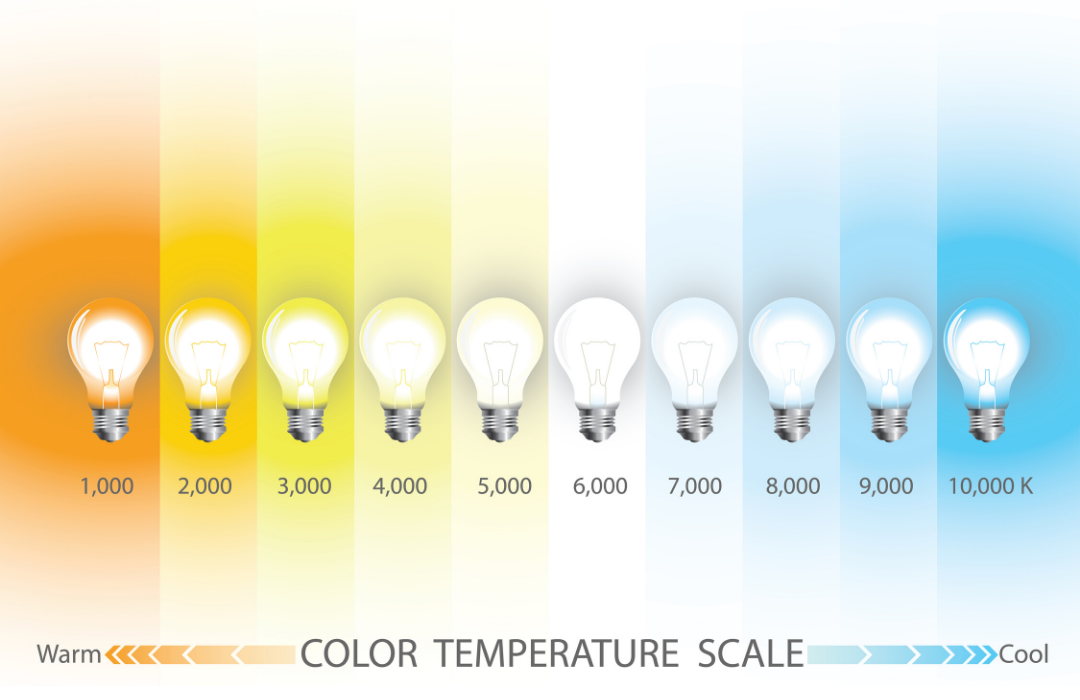
Of course, it’s not just the fixtures that you need to be paying attention to: the light itself plays a critical role in nailing down the perfect lighting scheme. Light color is measured on the Kelvin (K) temperature scale- the higher the number, the more white or blue the color will appear, whereas lower numbers will have a warm, yellow tone. The main categories of color temperature for bulbs are Candlelight (2500 -2700K), Soft White (3000K – 3200K), Bright White/Cool White (3500K – 4100K), and Daylight (4100K+).
Types of Bulbs
Edison-style
A popular trend over the past few years is using antique-style bulbs that are exposed and longer in length. What’s nice about these bulbs is they tend to burn warmer (definitely in the 2500 K range) and can add a lot of lovely layering to the overall lighting effect in your space.
LED
Because this is the direction the world is moving in, I’d like to spend a little extra time going over the details. There are two main things to think about with LED: Output and Color.
-Output (lumen levels): Amount of light. We typically think of the brightness of a bulb in terms of wattage; however, wattage actually references the amount of energy needed to operate the bulb. The lumens scale measures the brightness of a bulb and should be factored in when choosing the correct bulb for your fixture and your space.

If you’re currently using incandescent and want to switch to LED bulbs, refer to the lumens to wattage chart above to determine which LED bulb is equivalent to your current incandescent bulb.
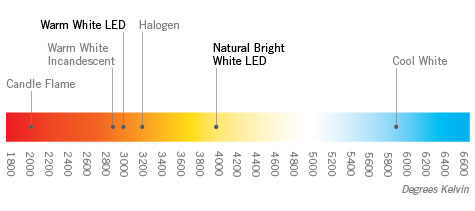 -Color (temperature): As mentioned earlier, light color is measured in Kelvins. I like to hit about 3000k or something close to it, but you really don’t want to exceed 3200K in your home, with the exception of spaces that need extra white light to perform detailed tasks, i.e., workshops, garages, etc. But be sure to use your Blue light-filtering glasses! And if you want a really groovy pair, then check out The Store!
-Color (temperature): As mentioned earlier, light color is measured in Kelvins. I like to hit about 3000k or something close to it, but you really don’t want to exceed 3200K in your home, with the exception of spaces that need extra white light to perform detailed tasks, i.e., workshops, garages, etc. But be sure to use your Blue light-filtering glasses! And if you want a really groovy pair, then check out The Store!
Color temperature is super important and shouldn’t be an afterthought! Don’t spend another penny until you’ve checked this out:
A Better Bulb: The 3 Colors of Light and Why They Matter to get your lighting game on point.
Fluorescent
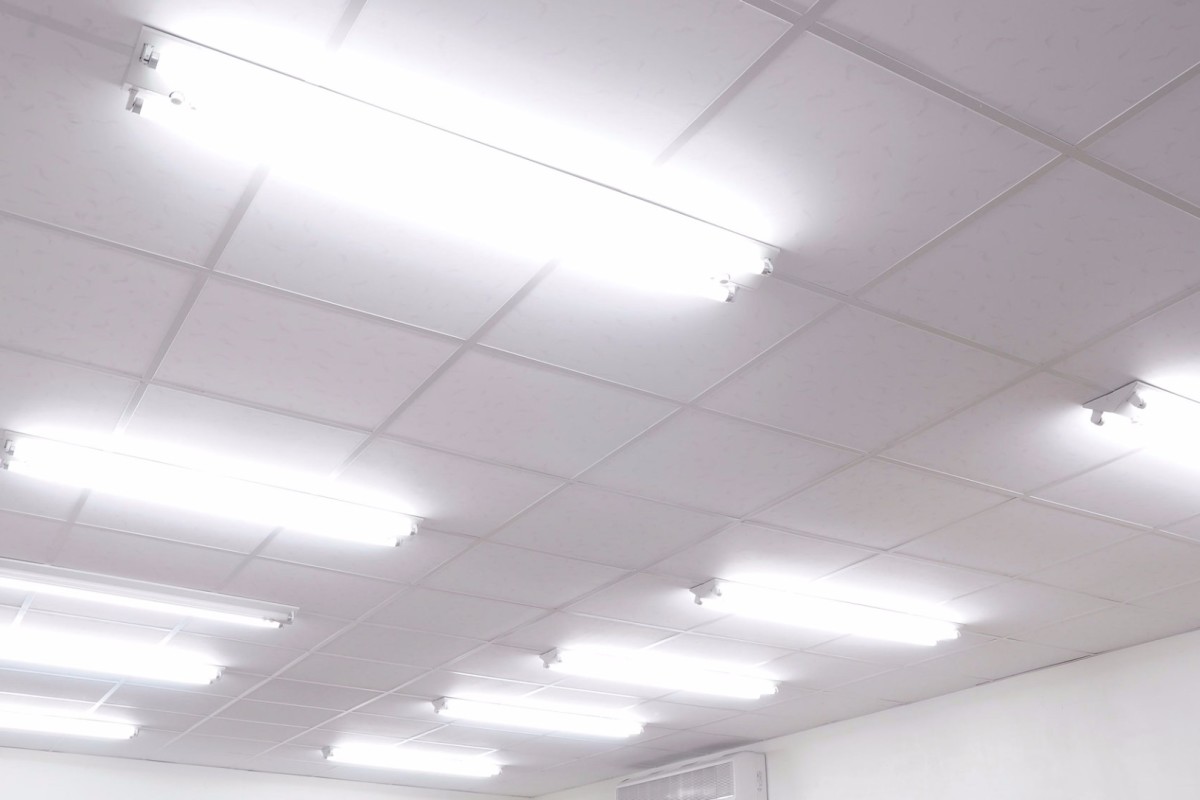
Yeah, NO. Sorry, but fluorescent is not a good look for residences…at all. Too blue, too bright, too blech! 🤢
Low voltage
A favorite! Low voltage lighting is often used with lighting you control the direction of, like track lighting- and we’re definitely a huge fan of that in specific applications.
Putting it all together…
A Luminous Look
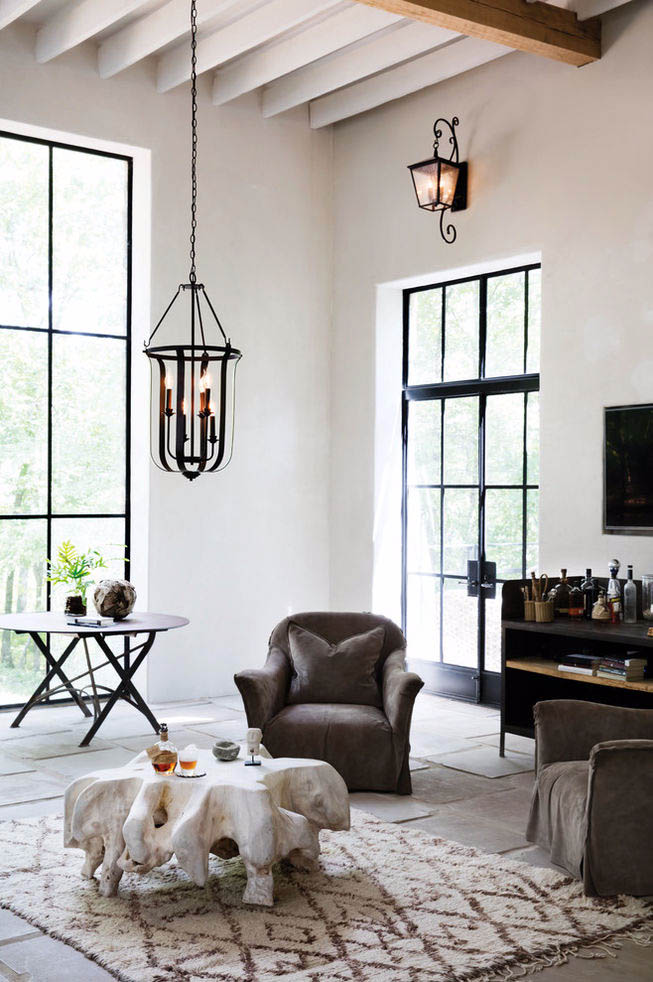
Take a look at your space with every light on. As you switch them off one by one, pay attention to what changes in the space, see what’s missing, and what becomes dark. When you do this analysis, you can begin to understand what holes you have in your lighting plan.
Remember- you want multiple layers of light in all of your spaces so that you can create flexibility to change the mood or the feel. Here’s my rule of thumb around that: You always want to look at each space individually and ask yourself, “Do I have 3 sources of light?” If you’re using your window as one of the light sources in that count, take it out. You need 3 total sources of light beyond your windows.
For the ultimate flexibility, you’ll want to put everything on dimmers. It’s really less of a suggestion and more of an absolute must- and believe us, you’ll only be doing yourself a HUGE favor! We realize that at this point, you just saw dollar figures run through your eyeballs, and we totally get it. 🤑 It’s actually not that expensive and absolutely worth every penny!
PRO TIP: We’re going to let you in on a little trick: If you have table lamps that plugin, you can buy a little dimmer on an electric cord at the hardware store. You simply plug the lamp into that and control the light level on the dimmer. Bada bing! Bada boom!
Also, if you’re in a space where the only lights you have are above you and they just turn on or off, then here’s what you’ll do: at night, switch the overheads off and turn on the three points of light in your space so that you can control your light level. Life is too short to live without a little ambiance, don’t you think? 😉
We see a bright future ahead of you! All you have to do is think about what your lighting needs are, apply the rule of three light sources, and get glowing!
Guess watt? We think you’ll also like Choosing the Right Lighting for Your Home!
Inspired? Why not go and buy yourself something shiny? ✨

